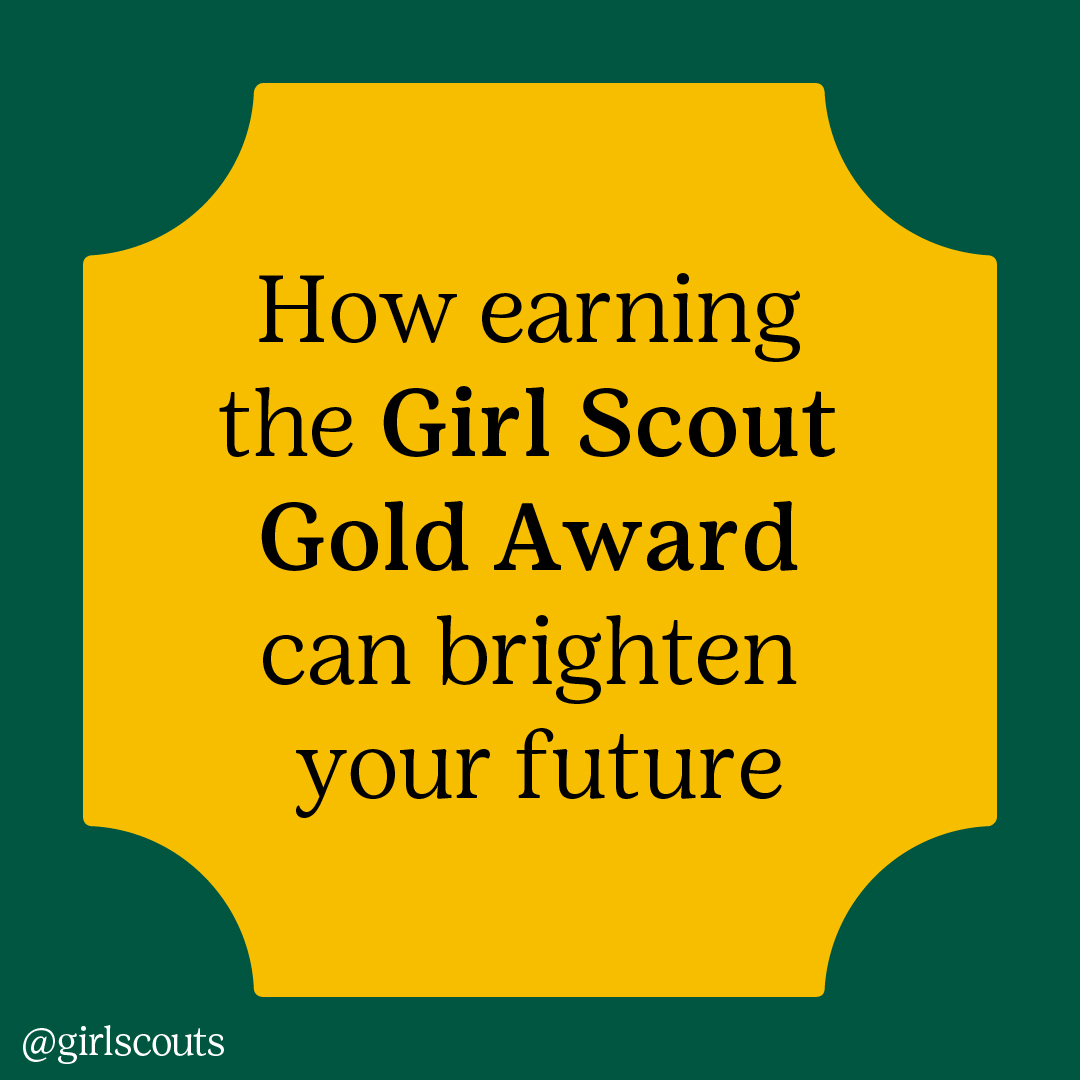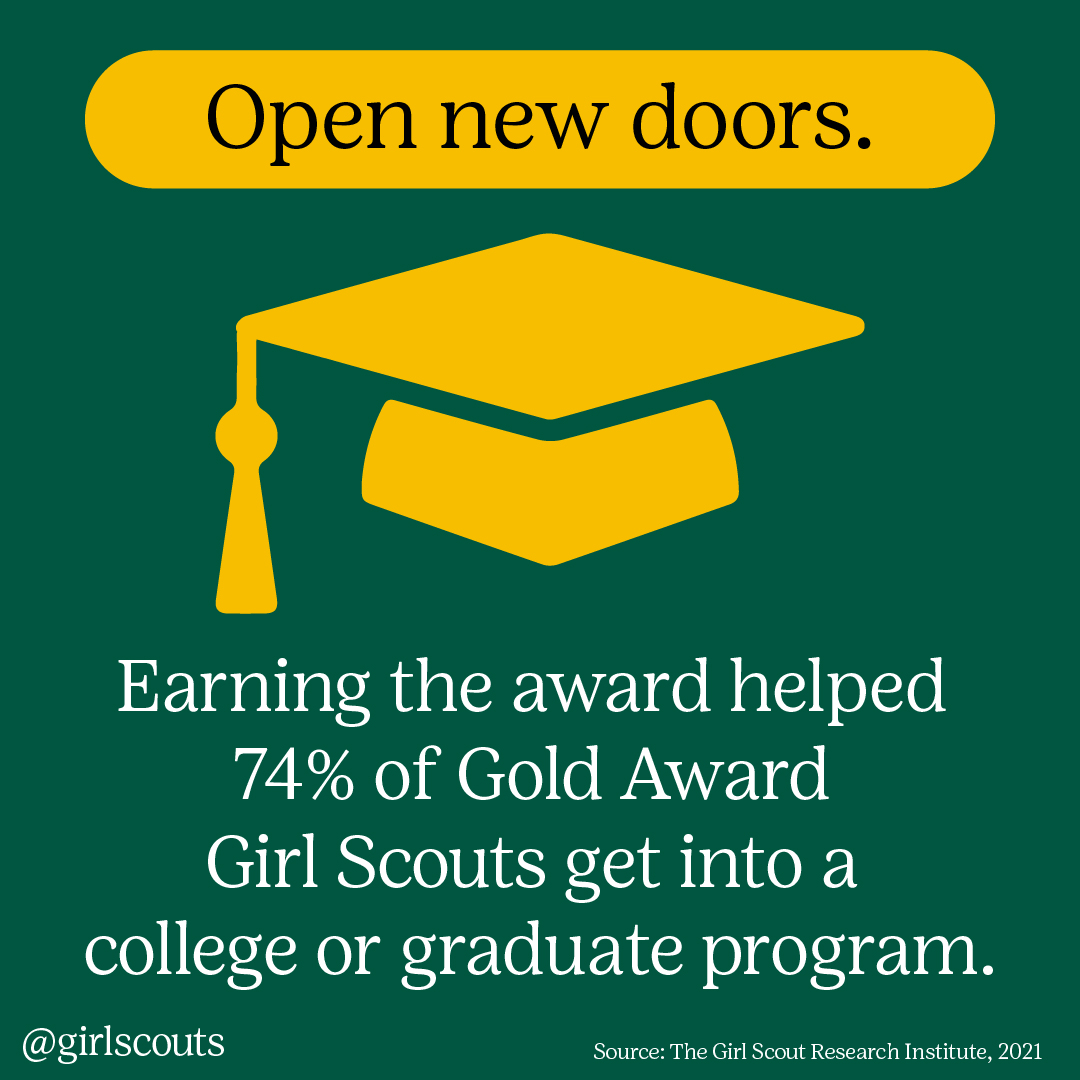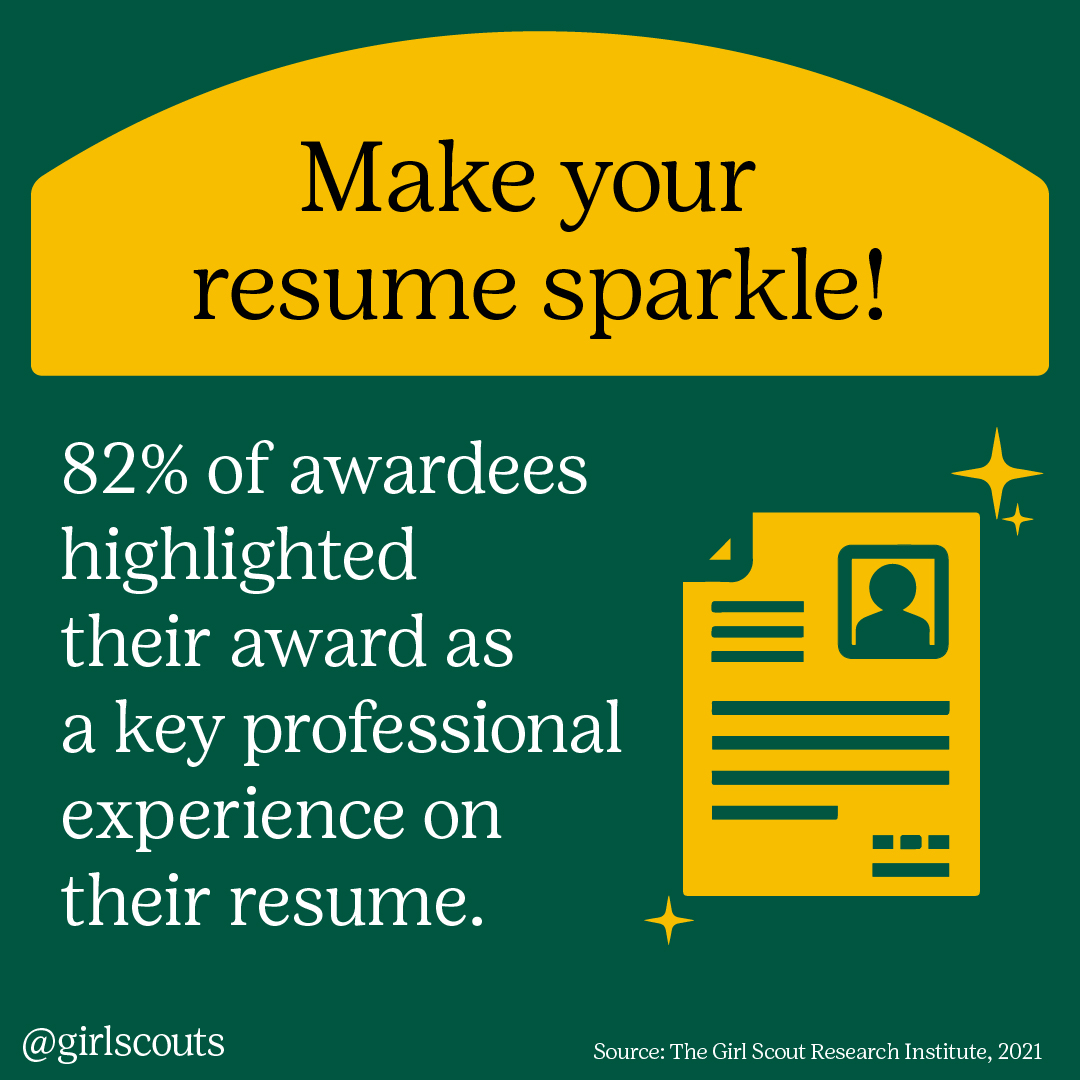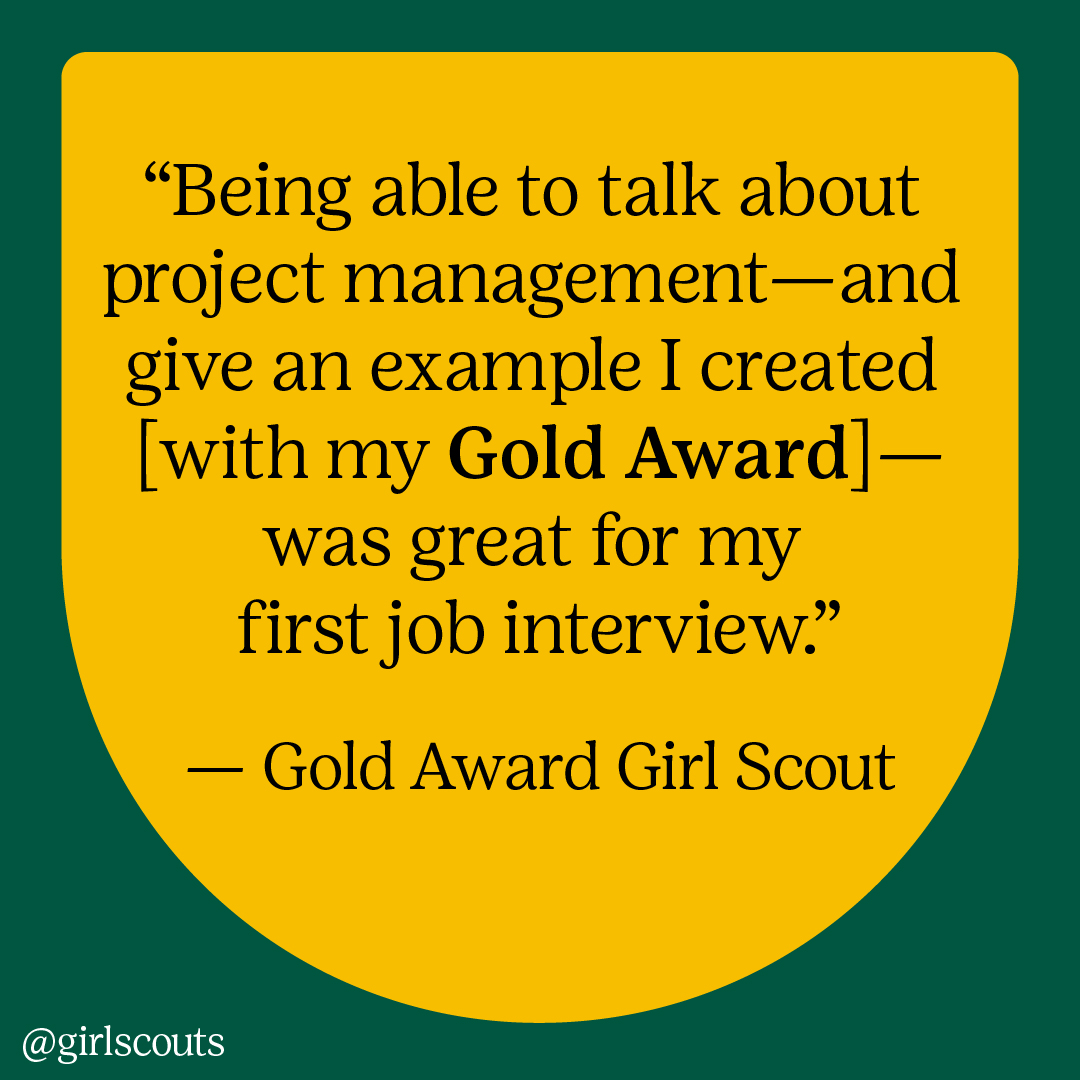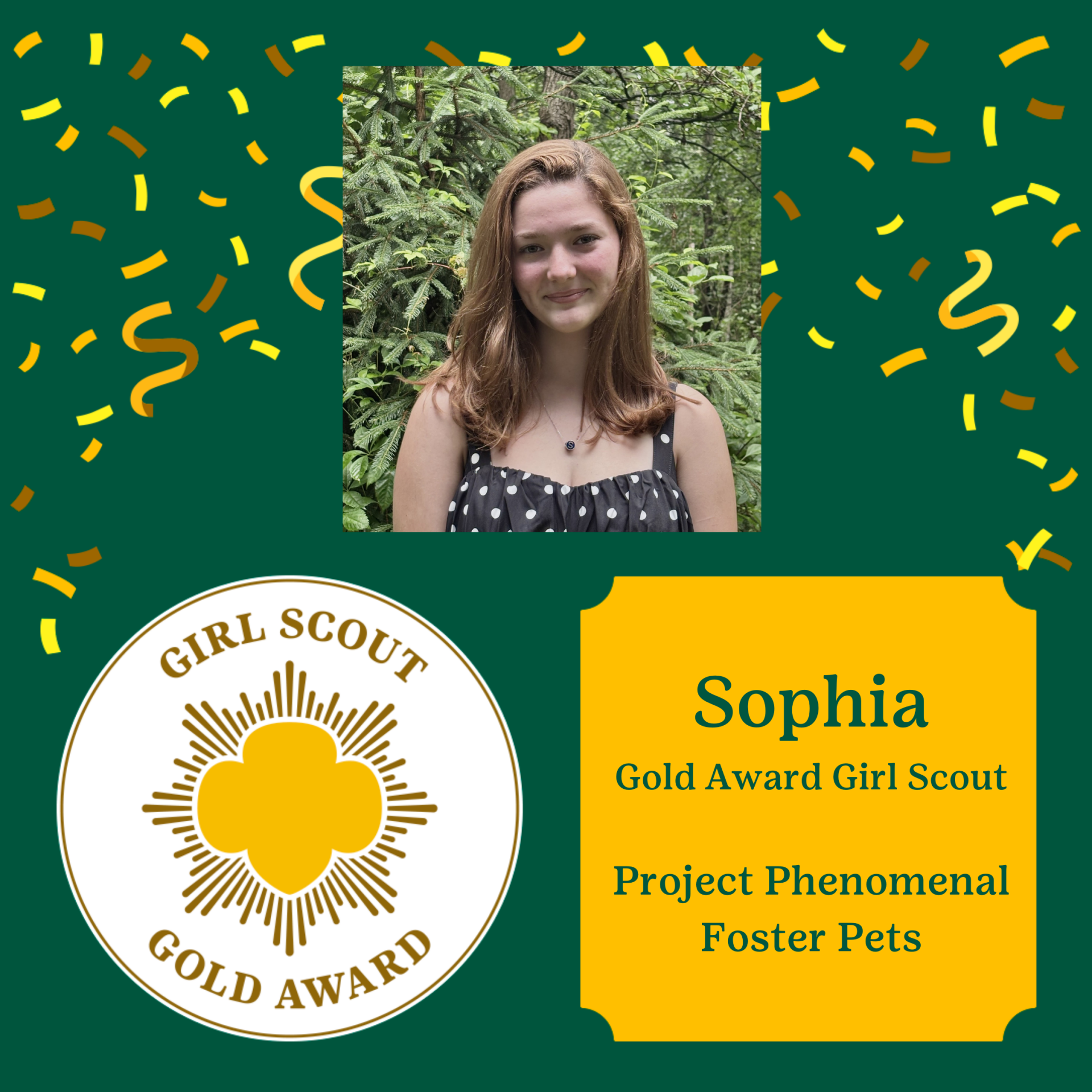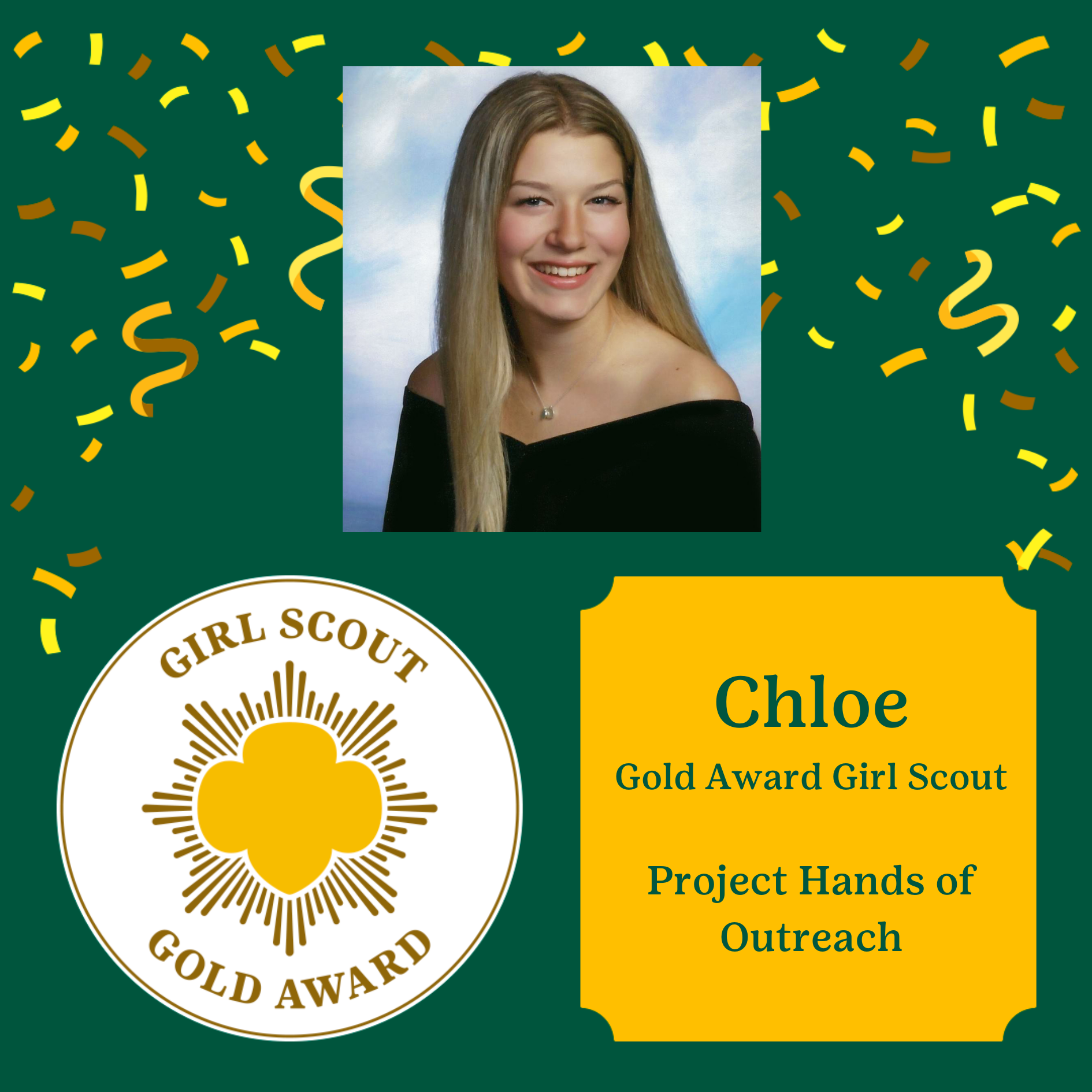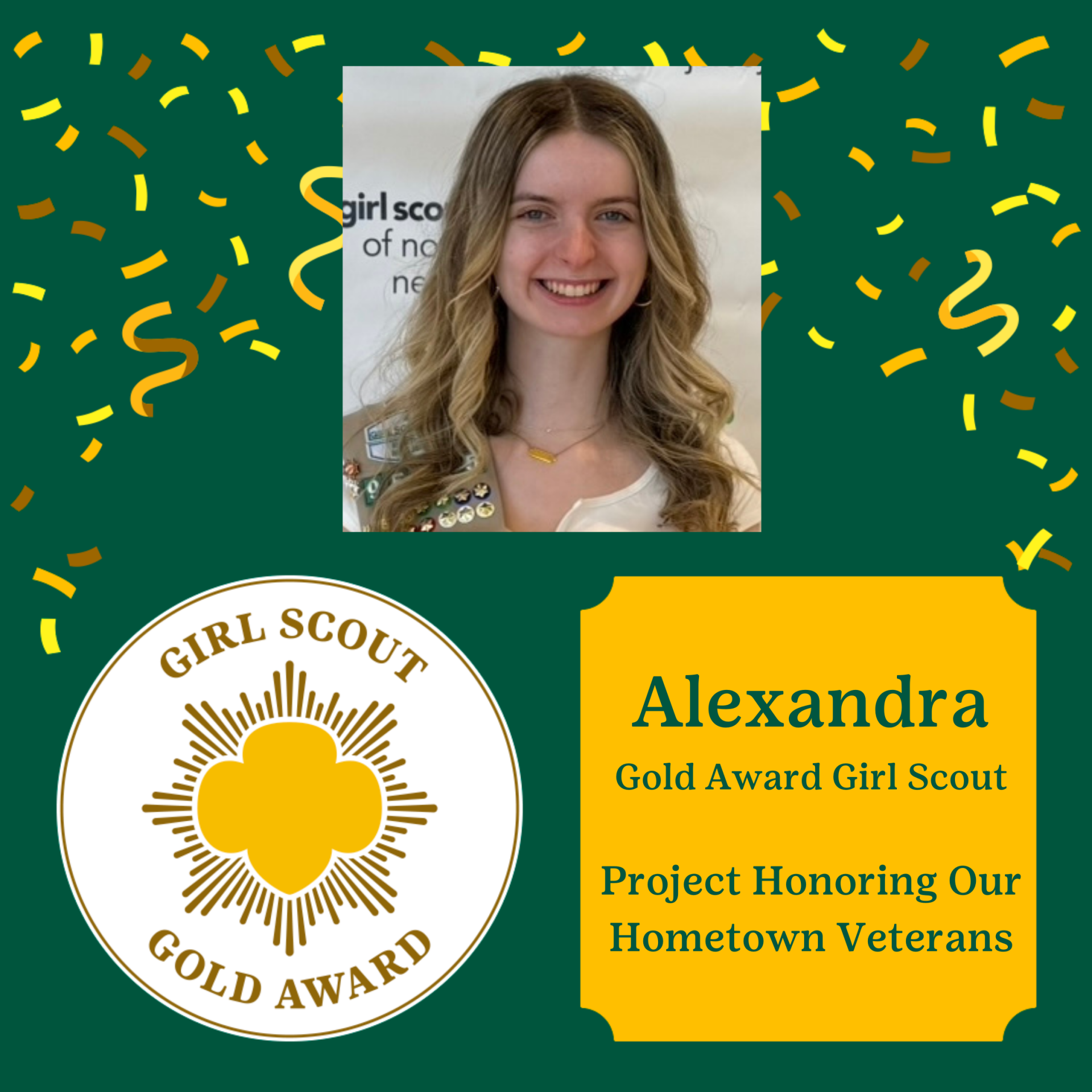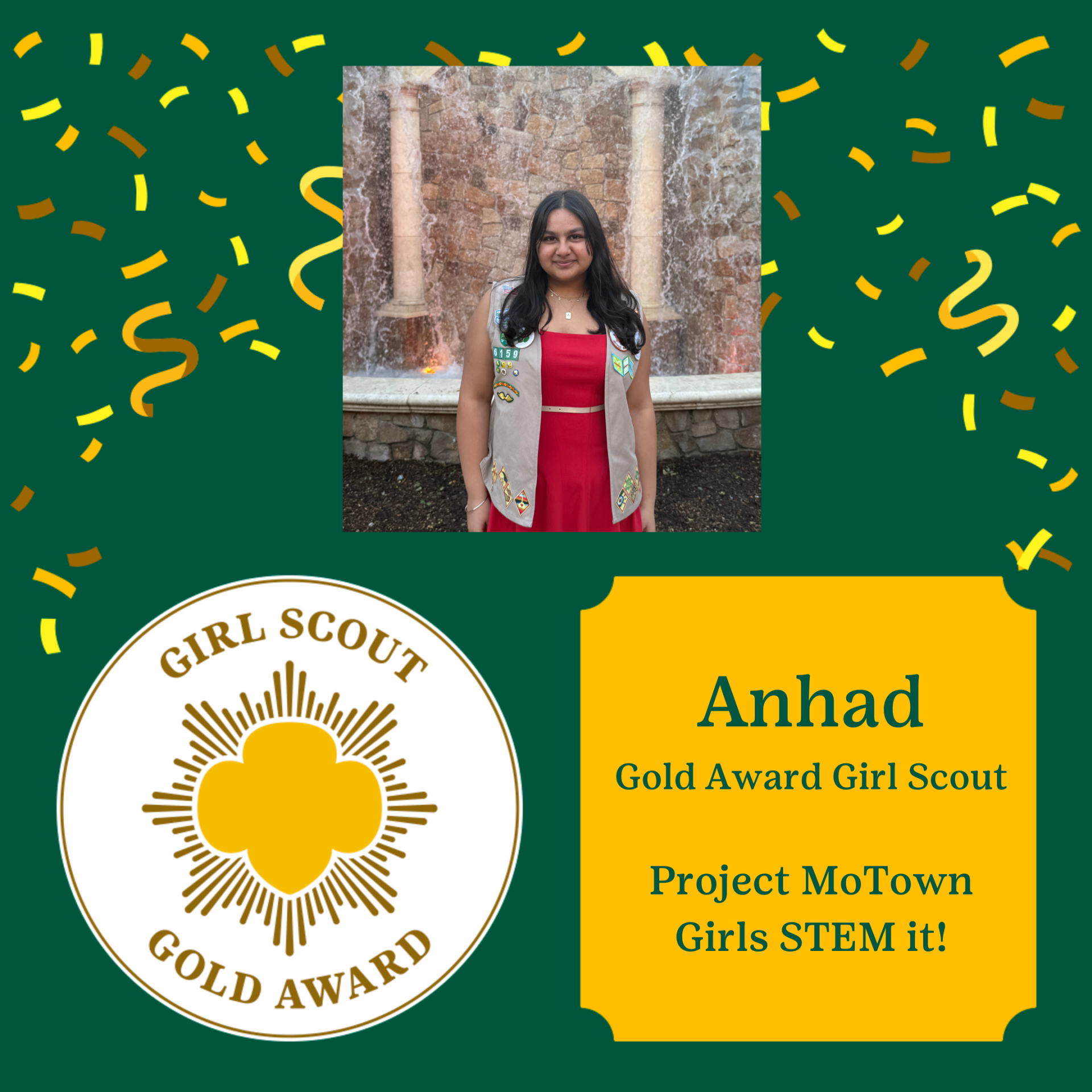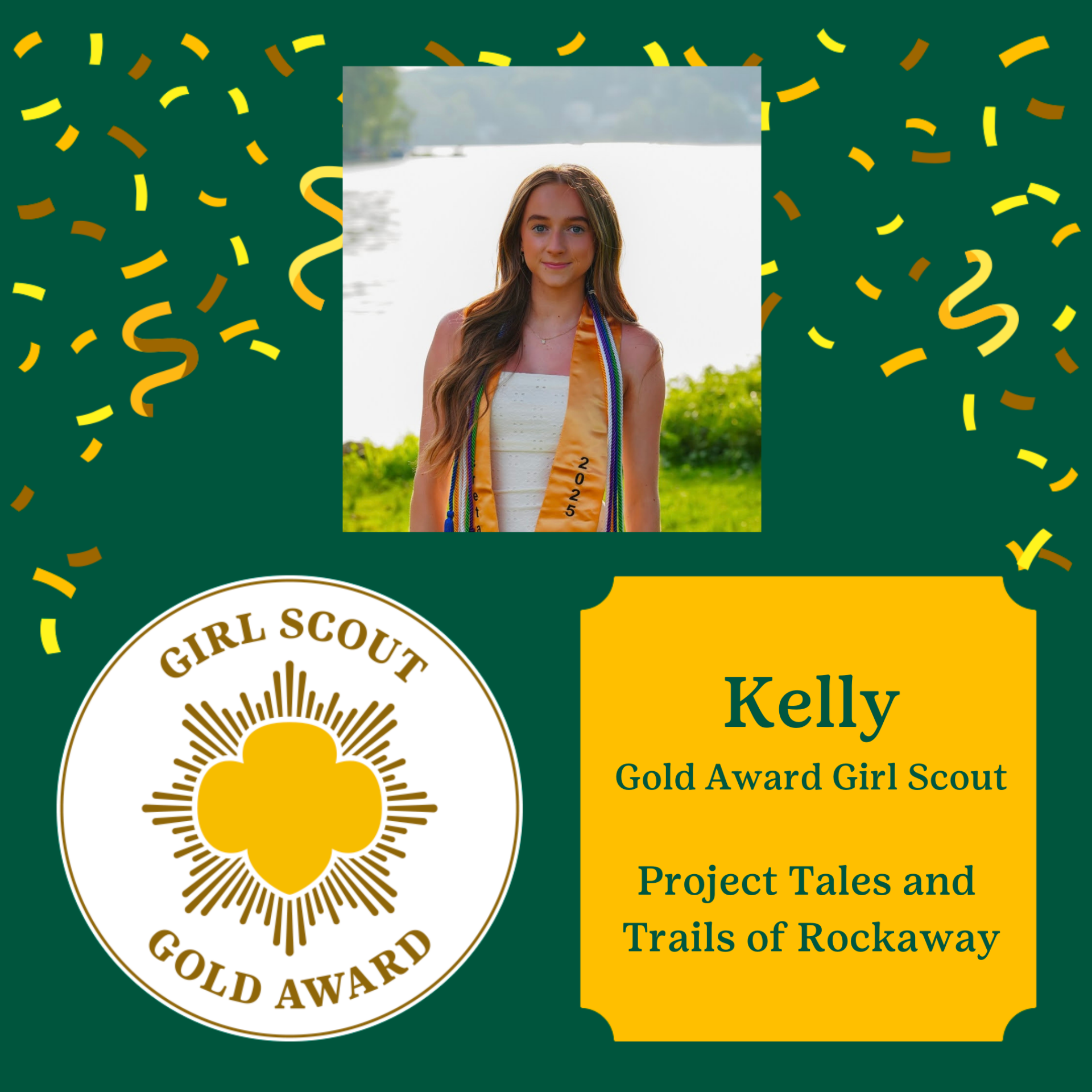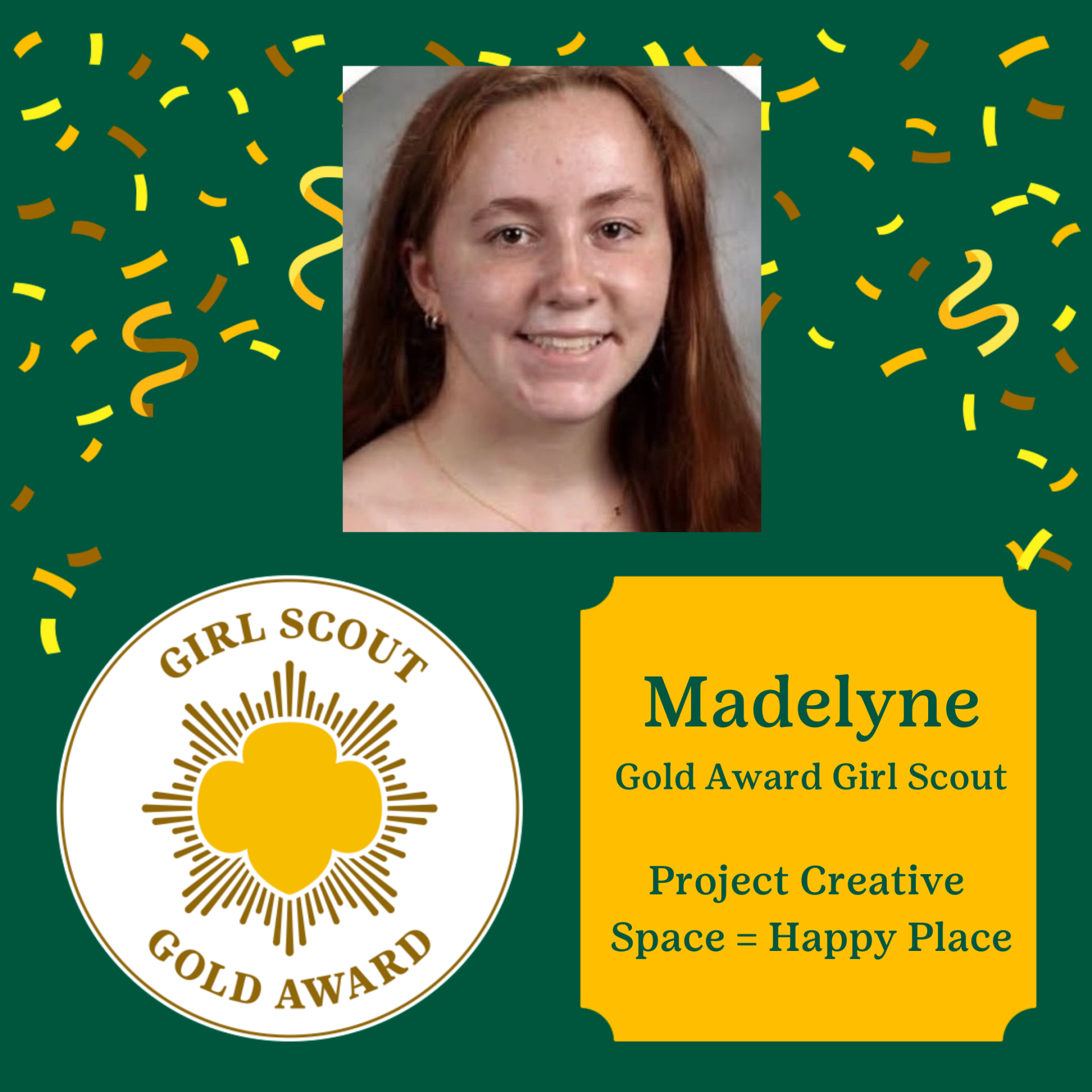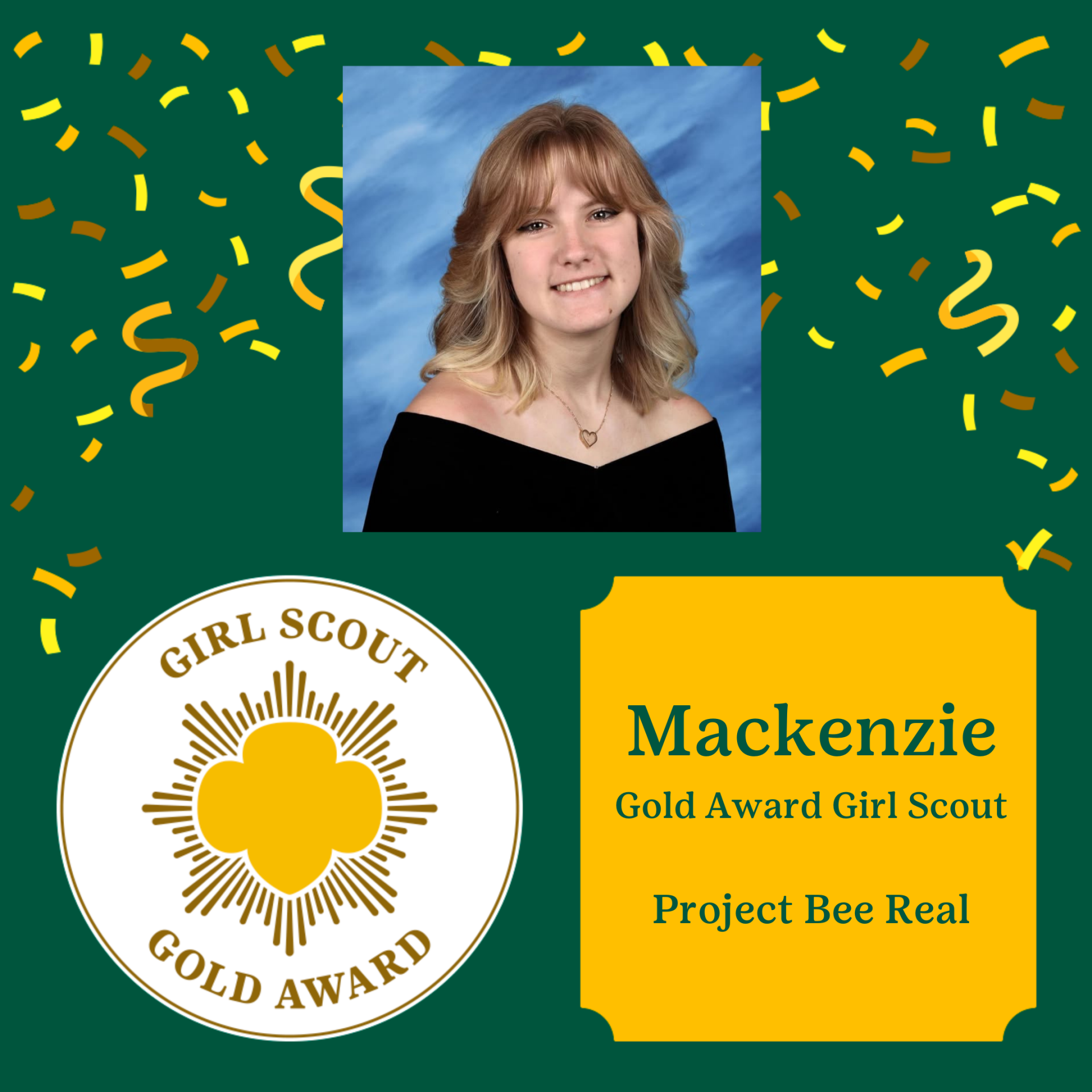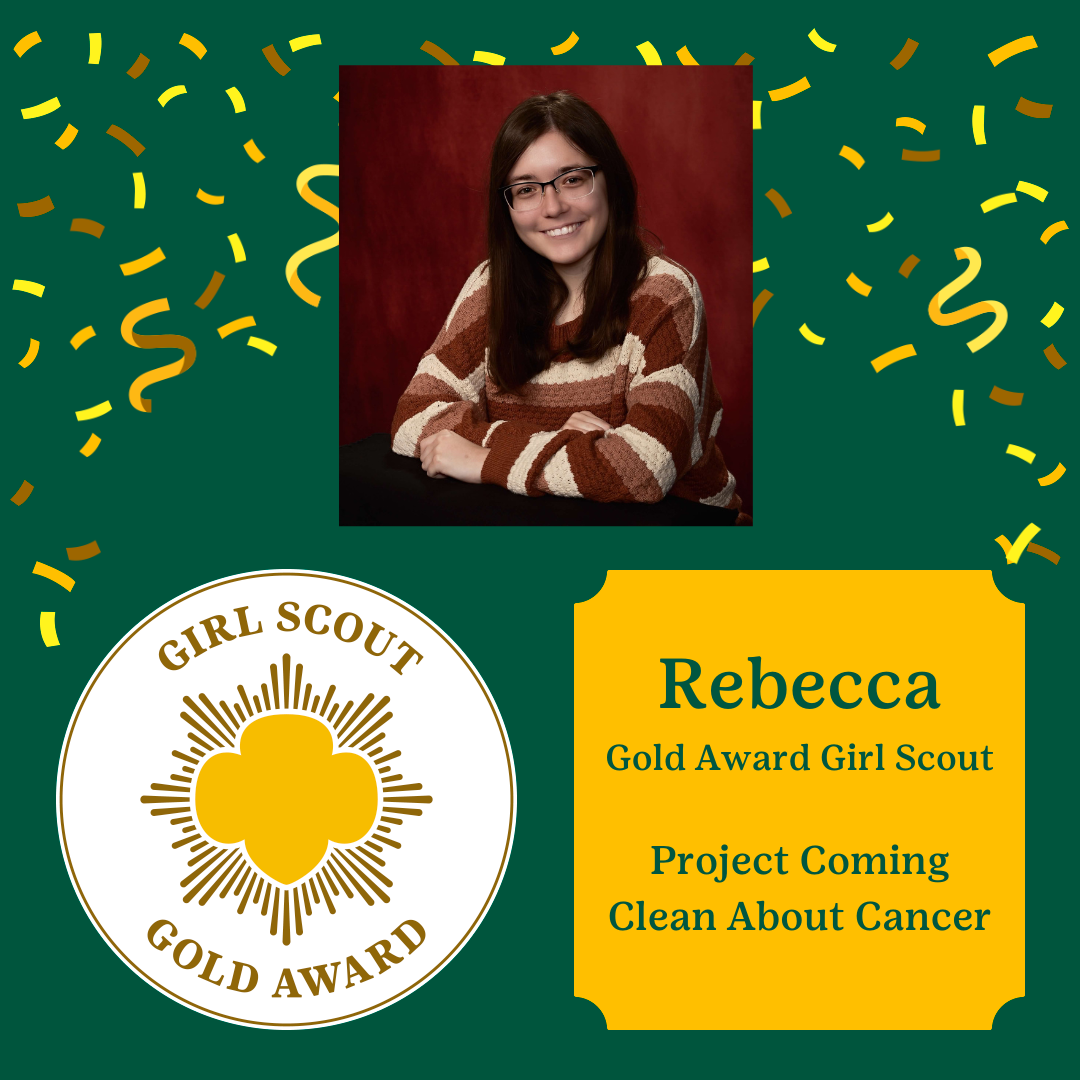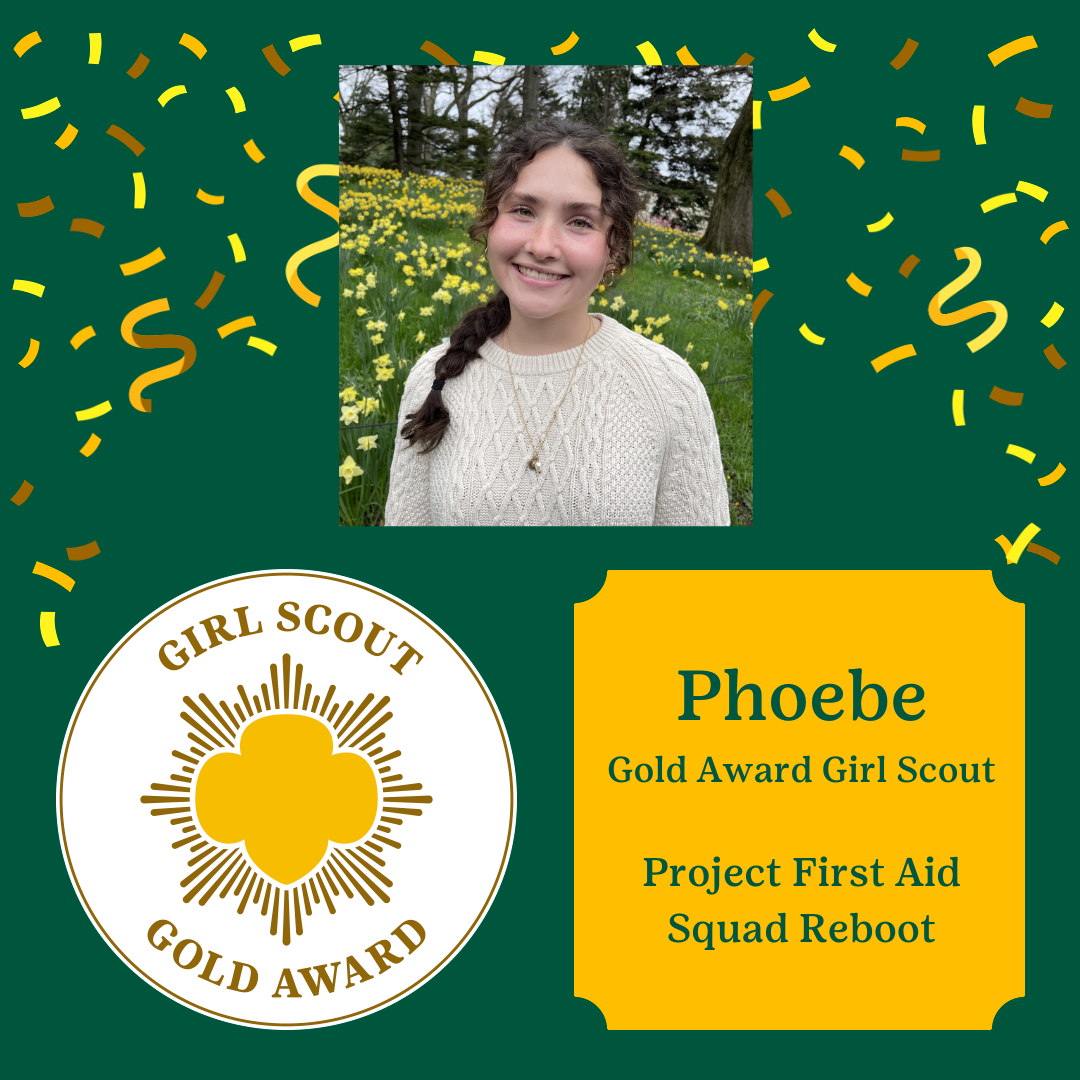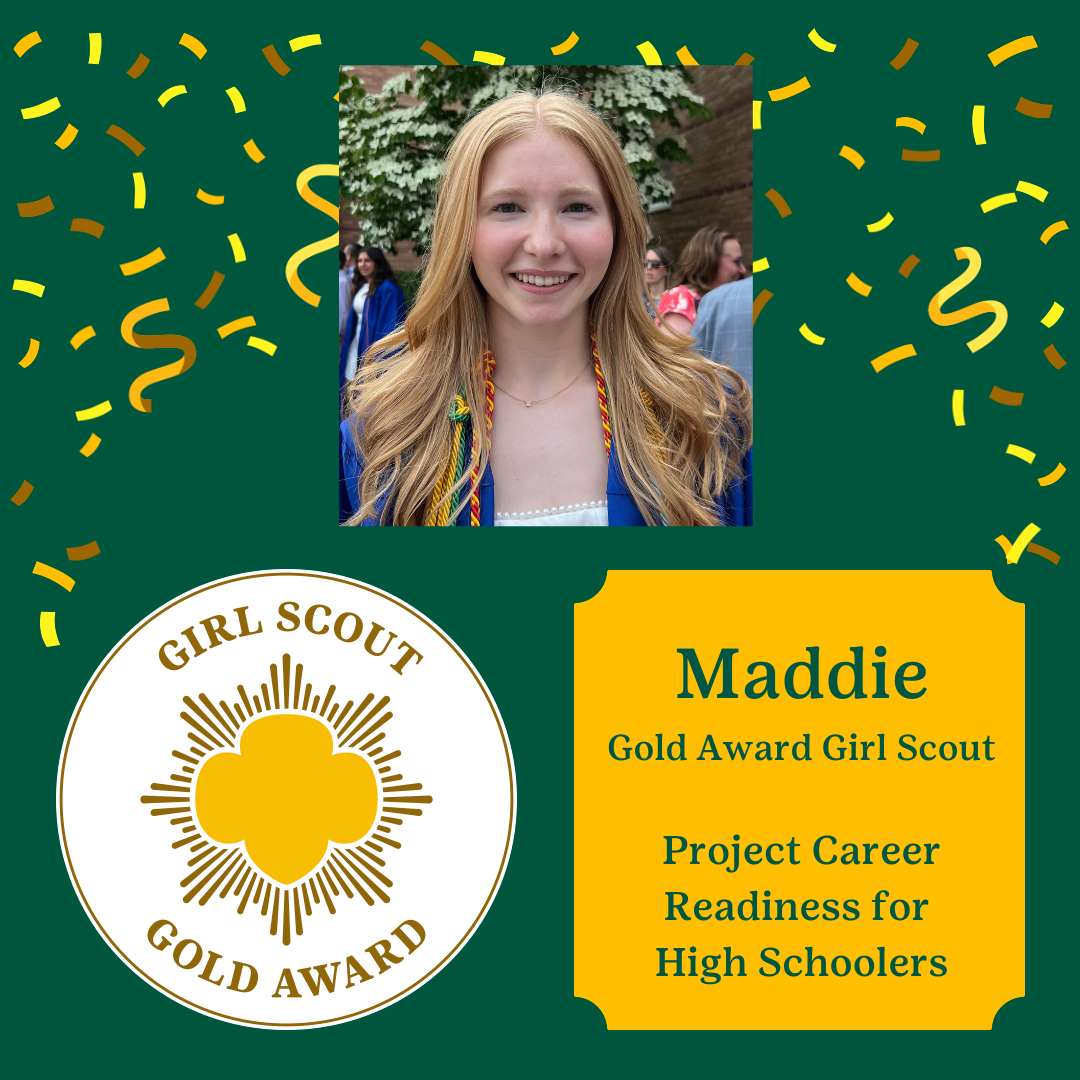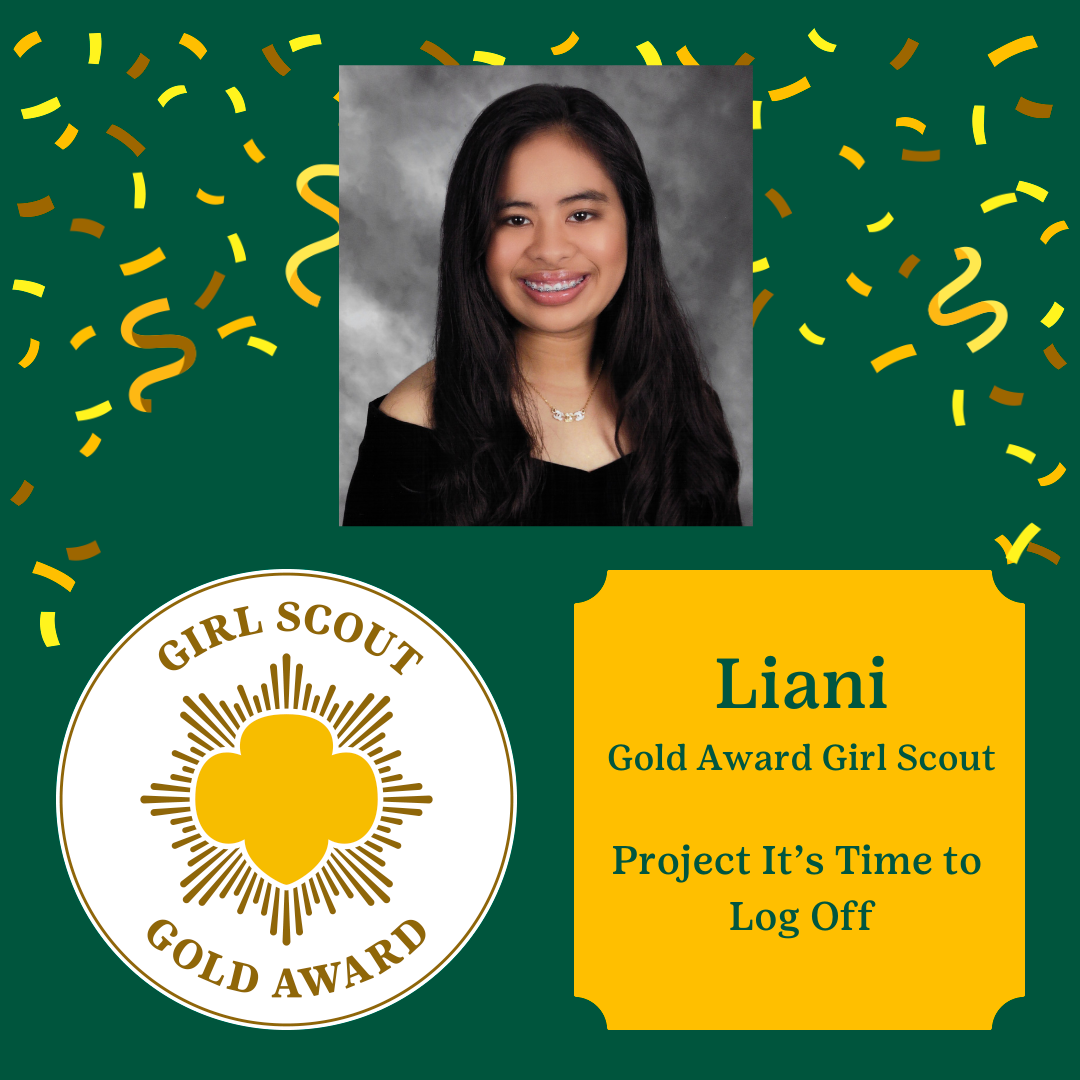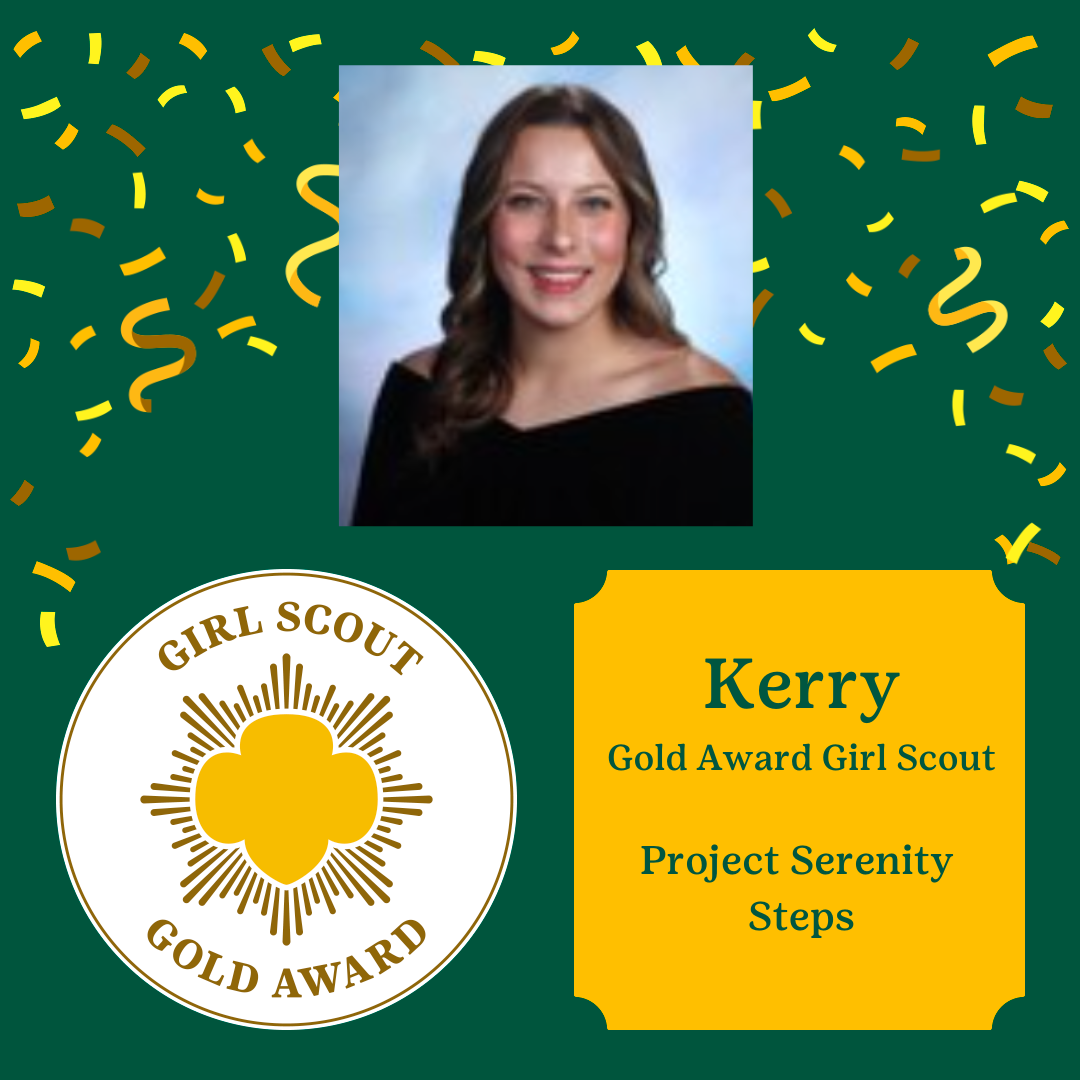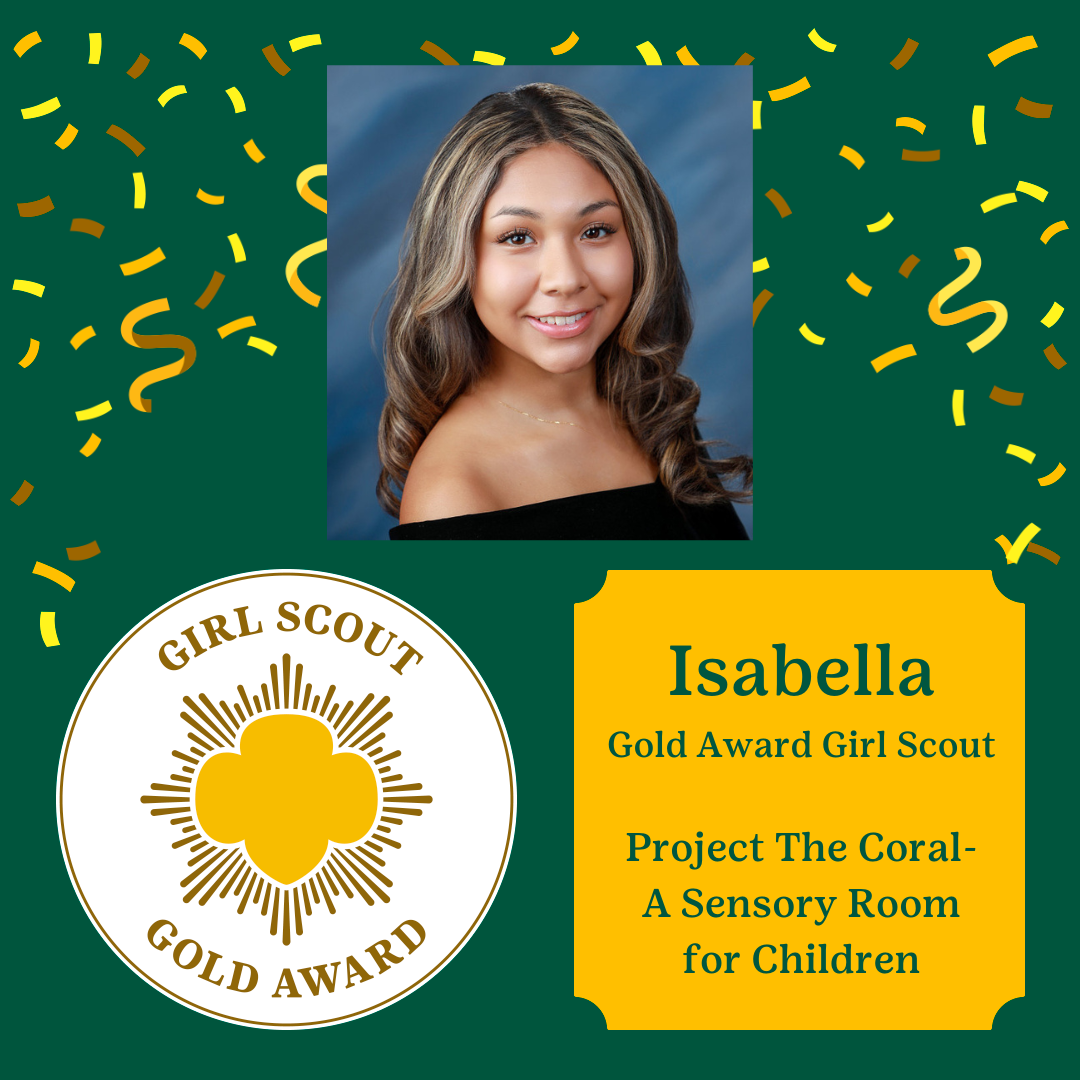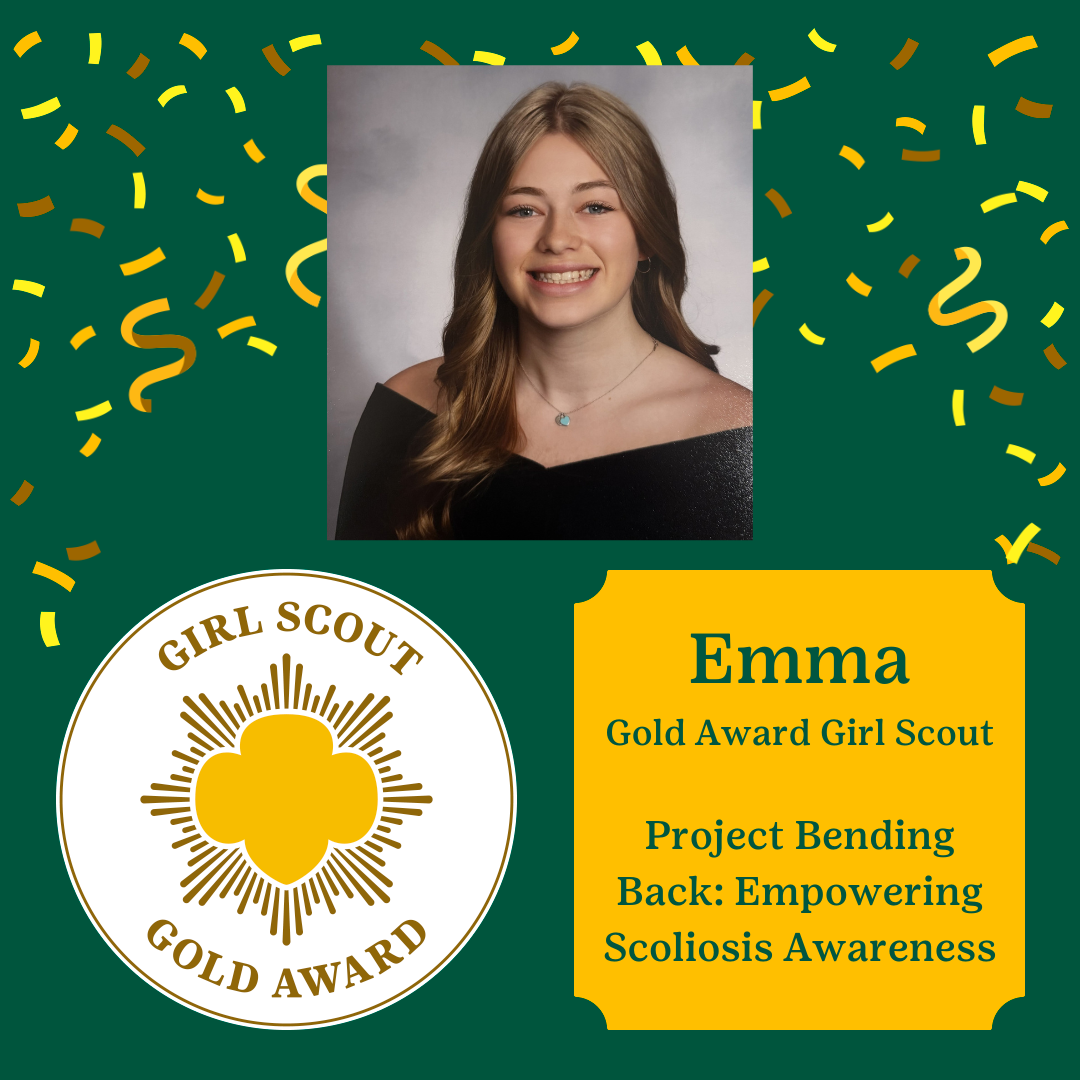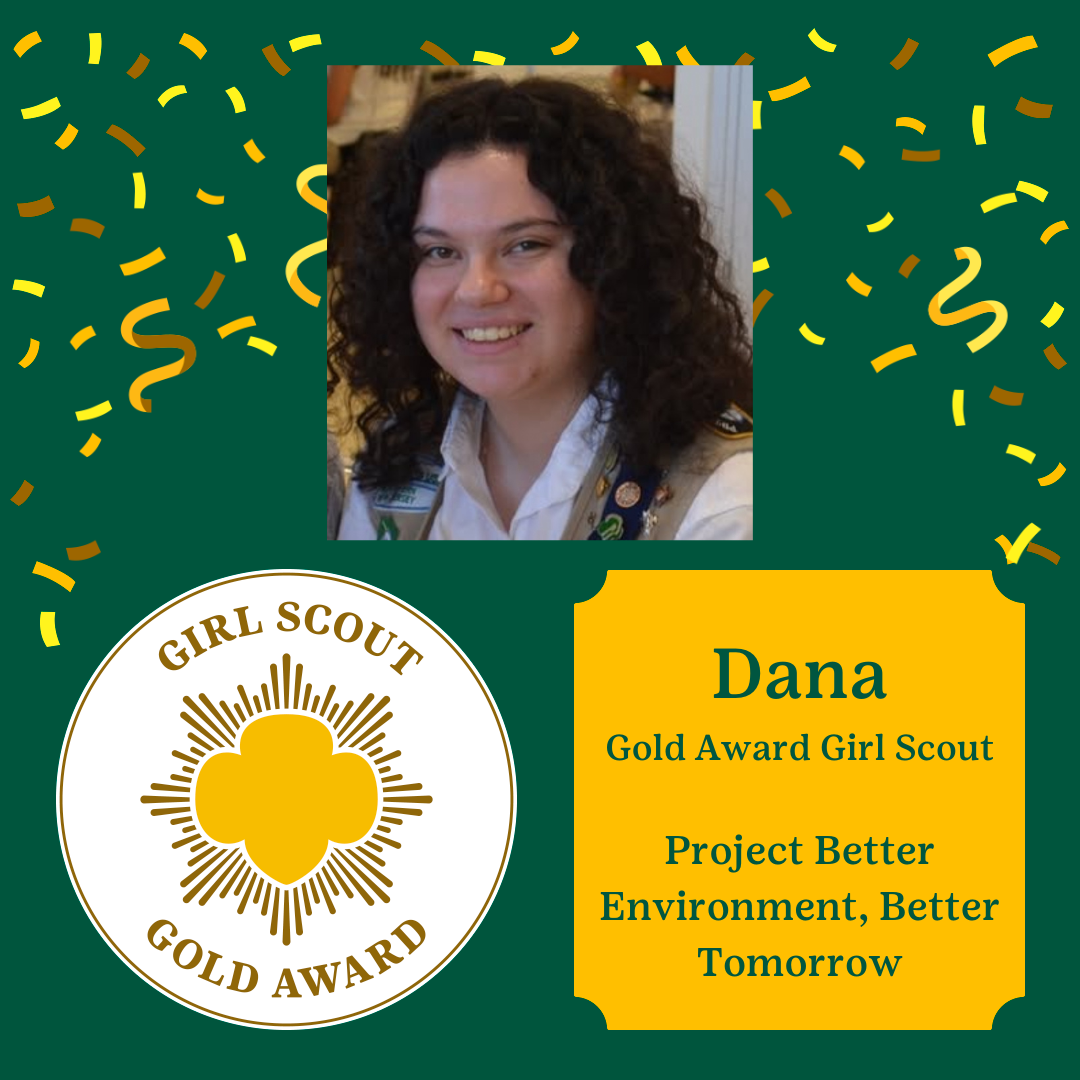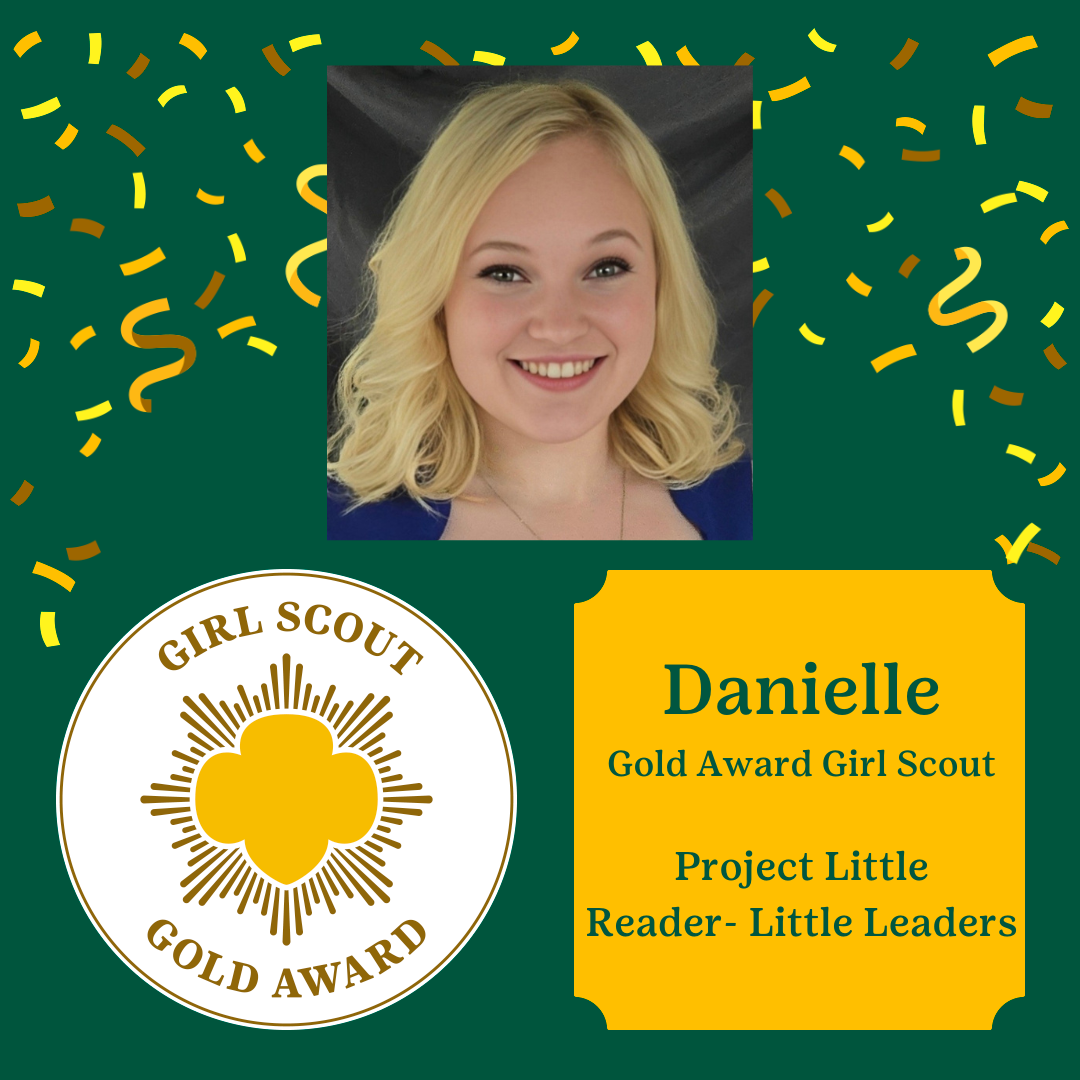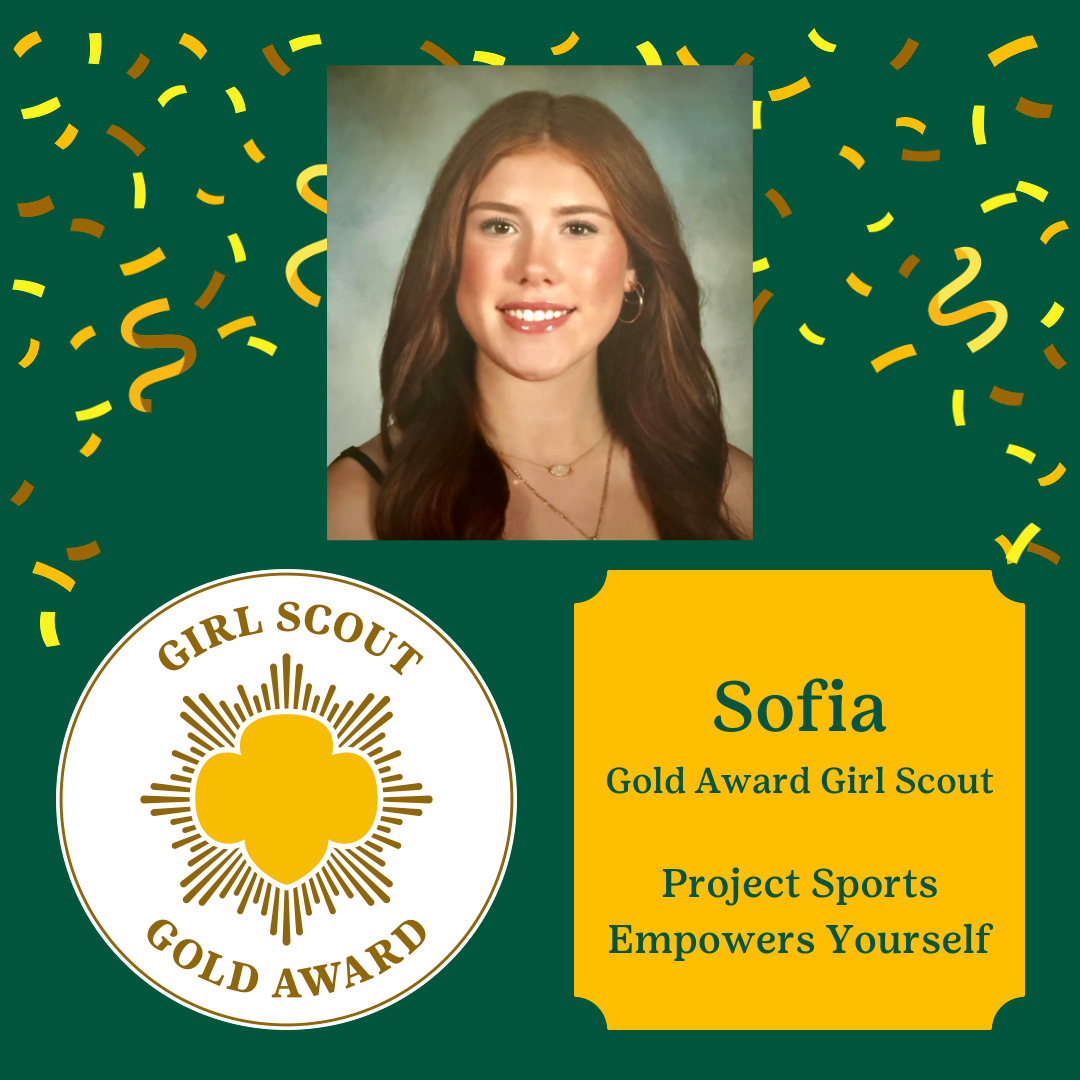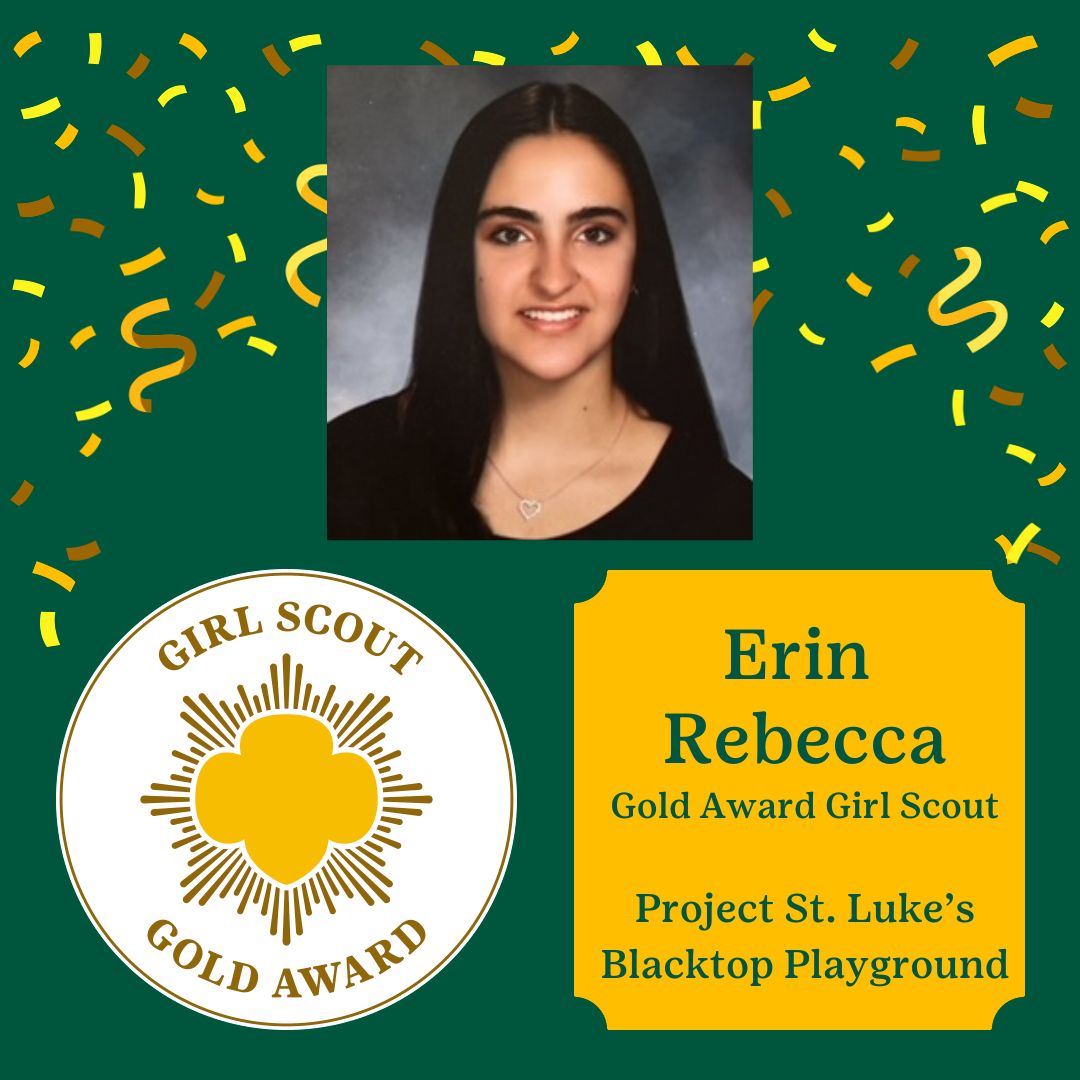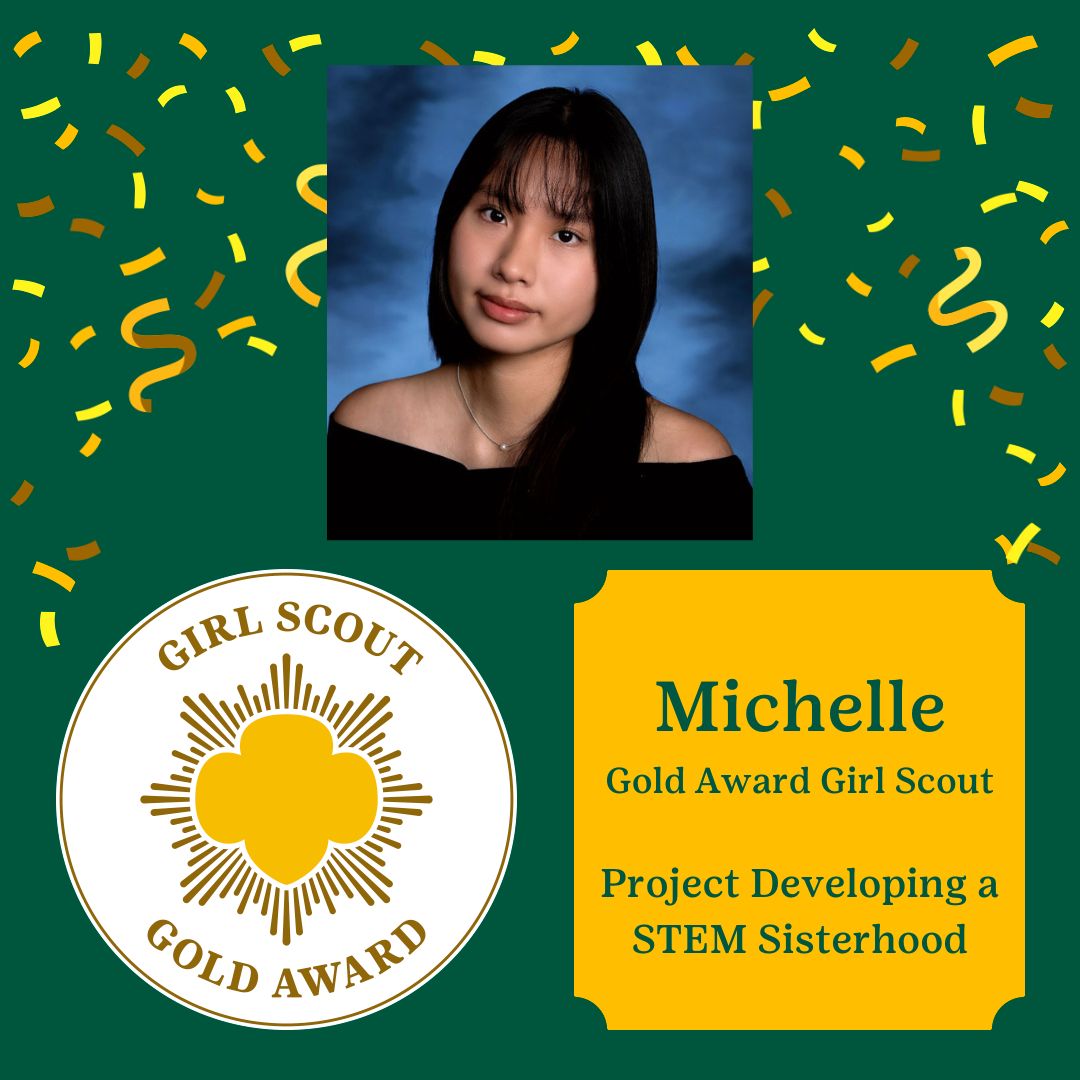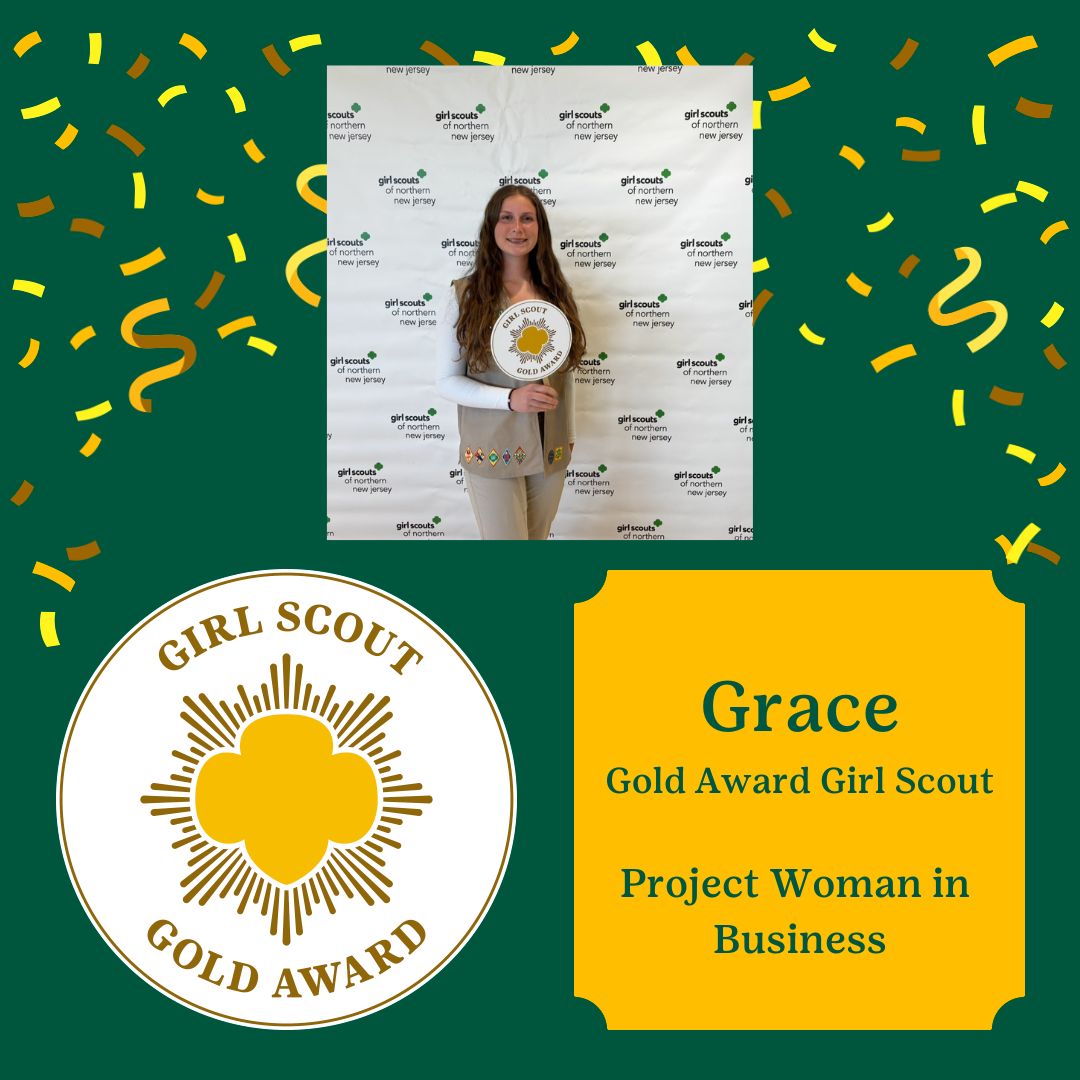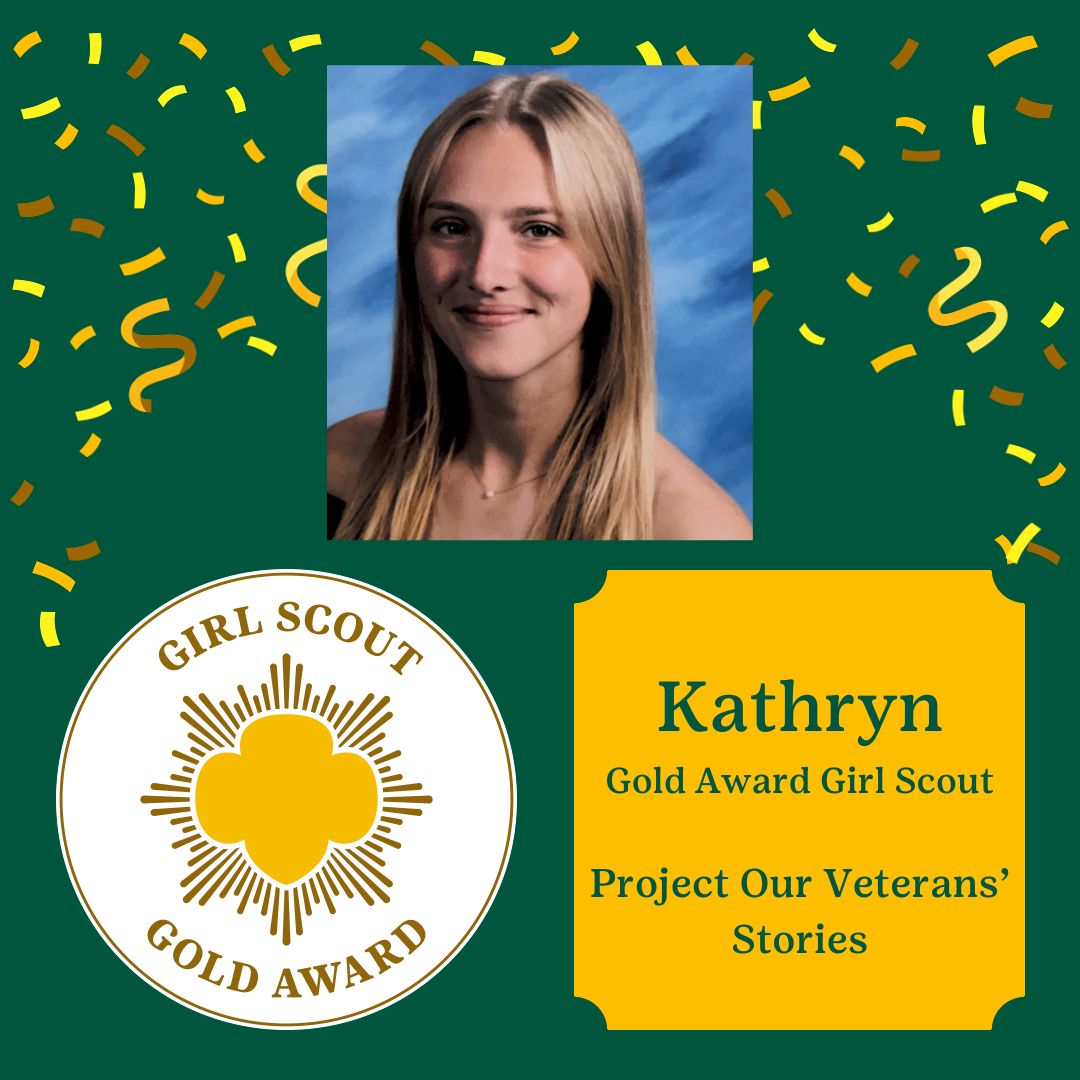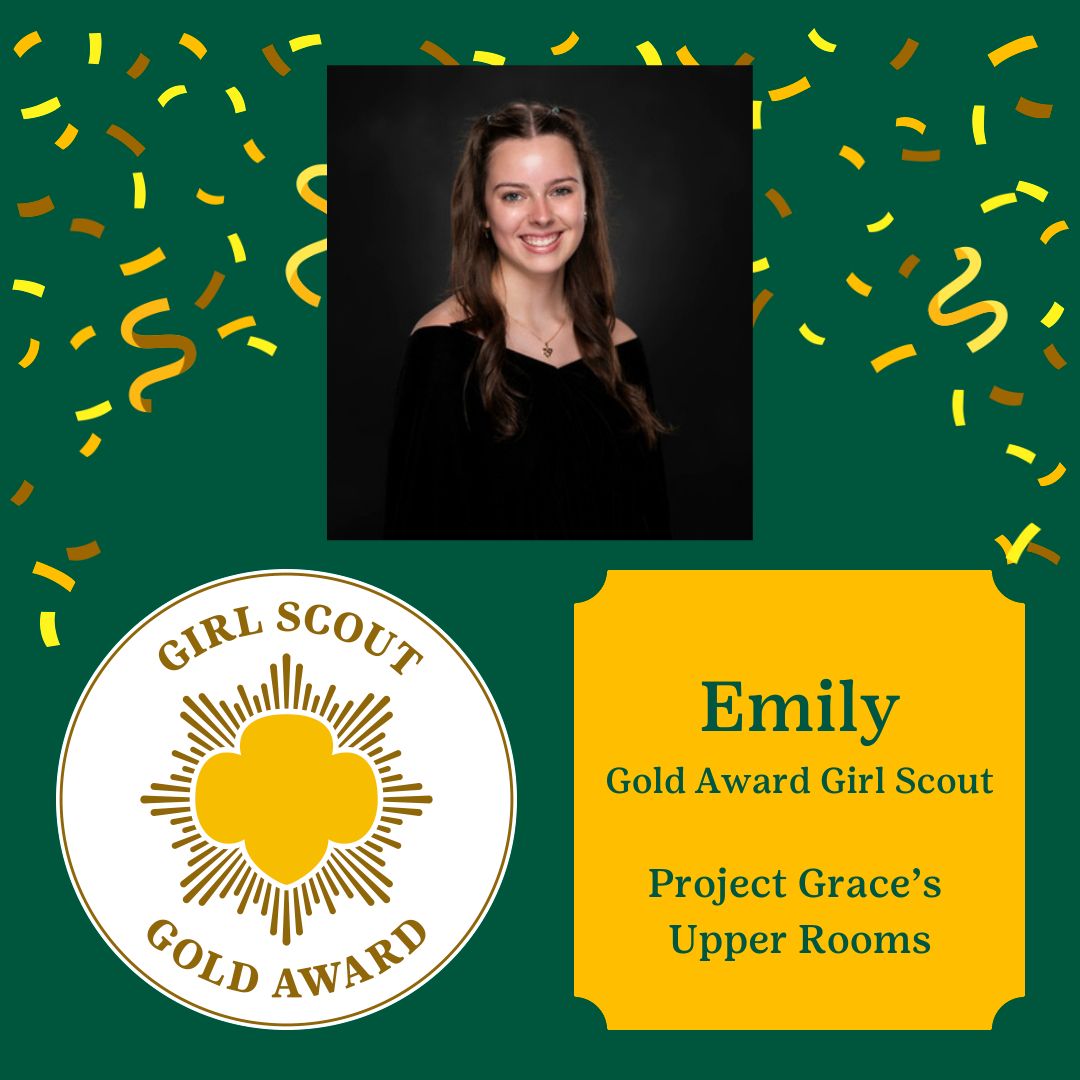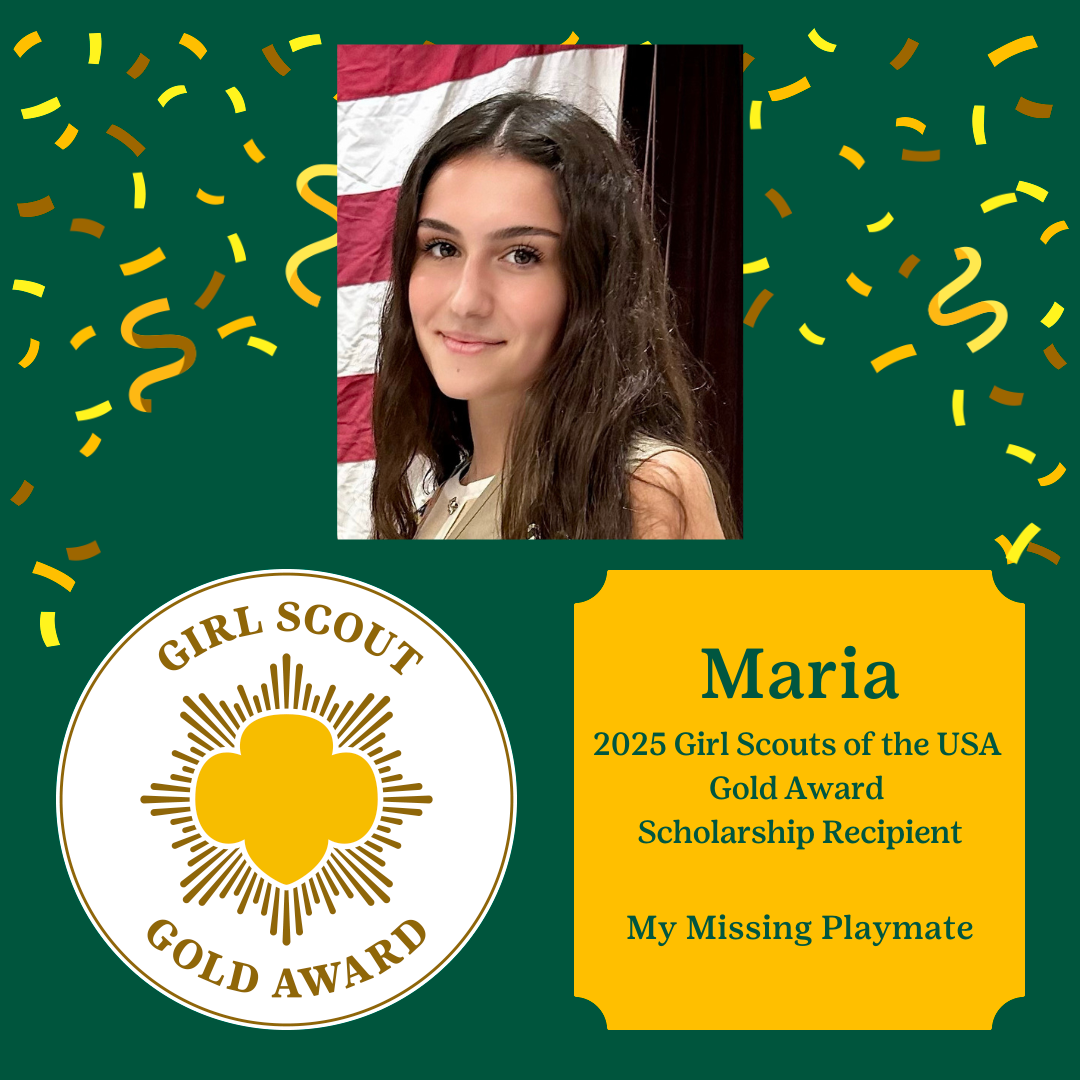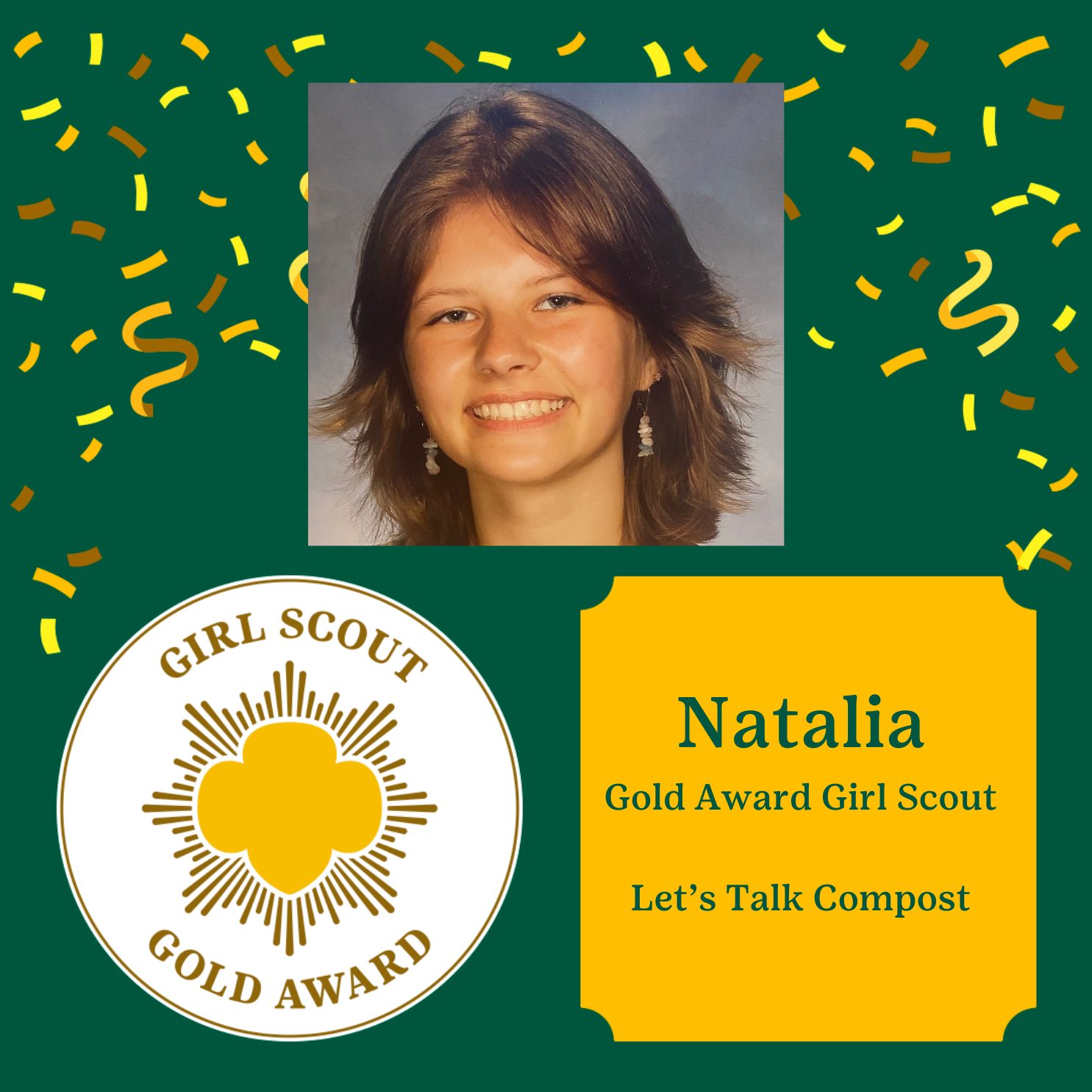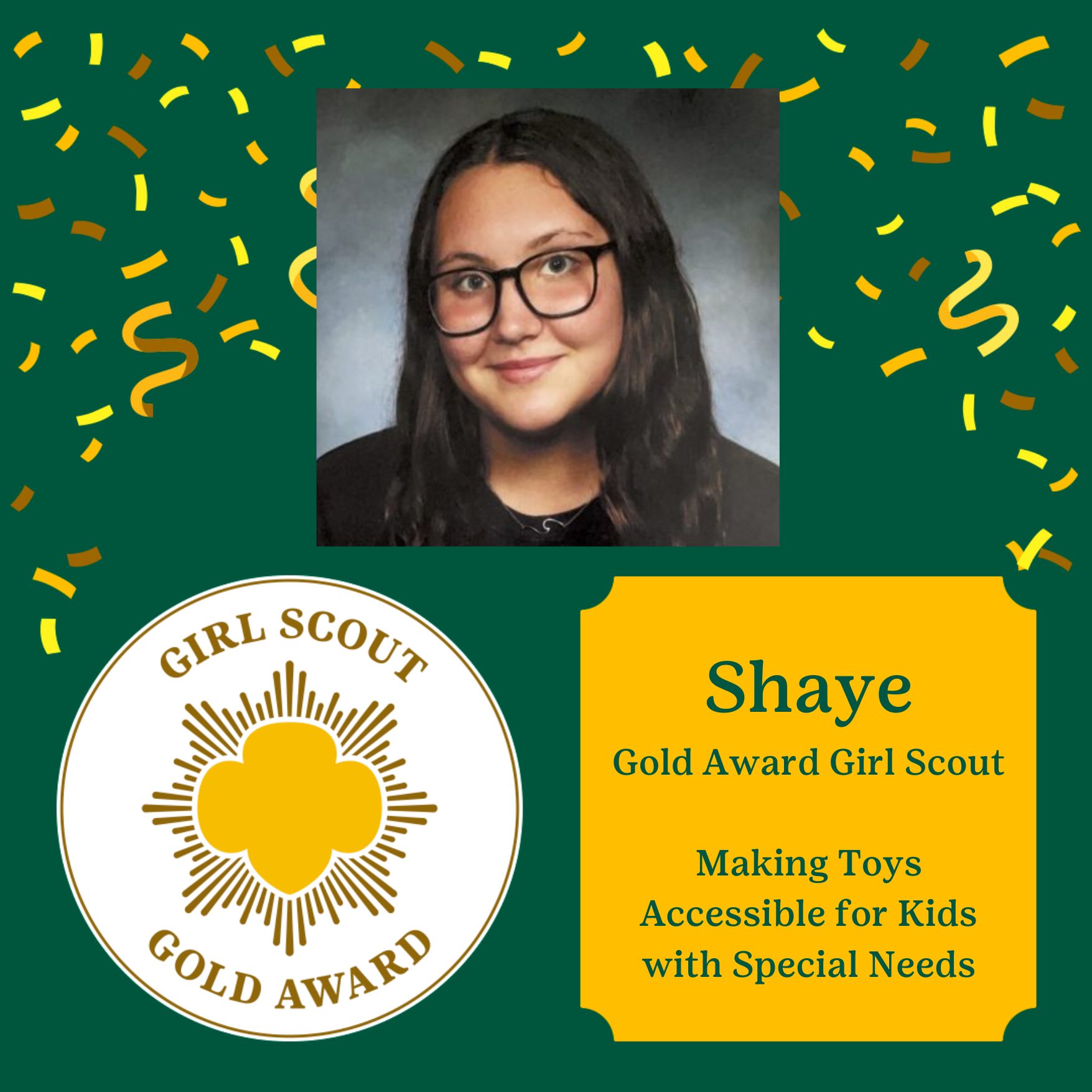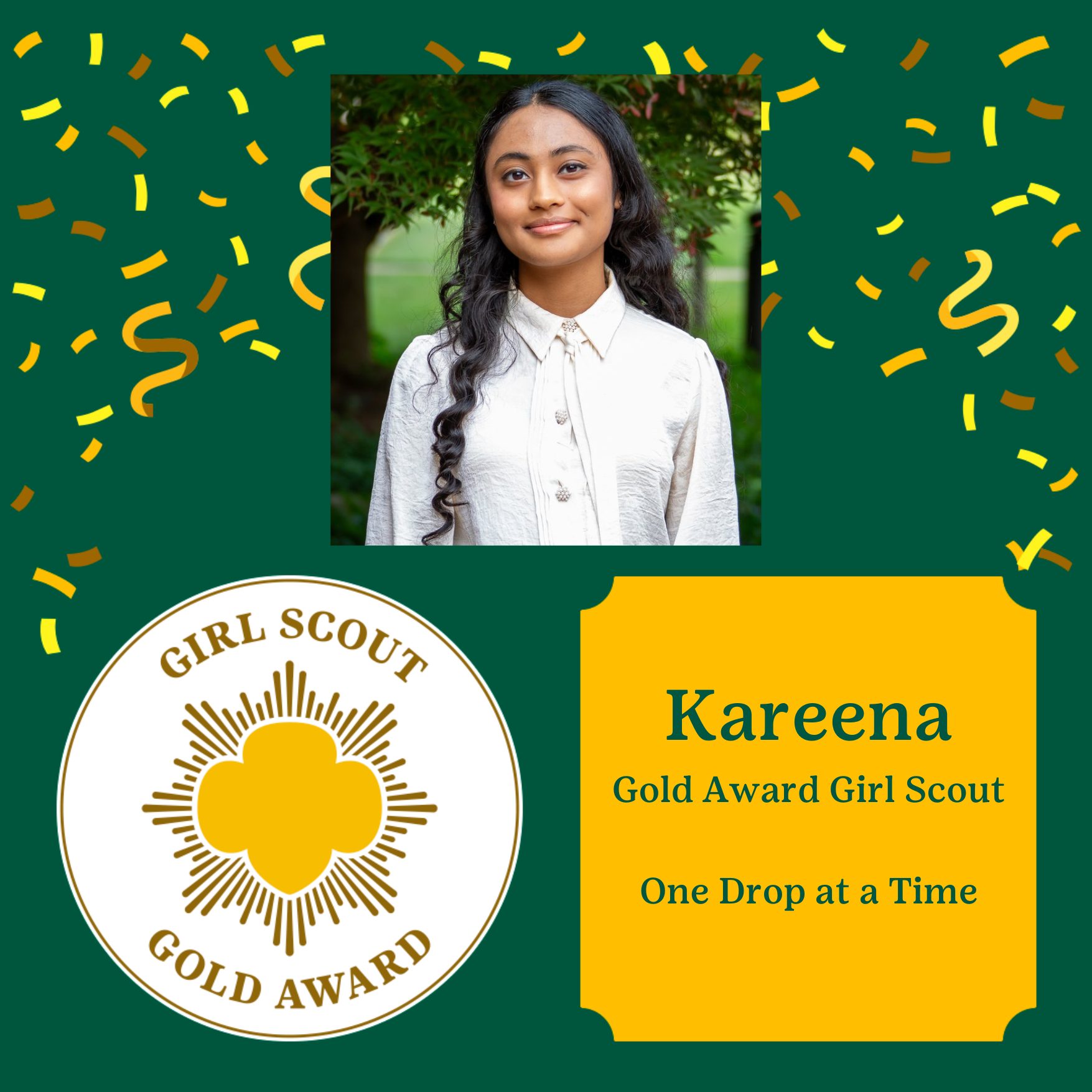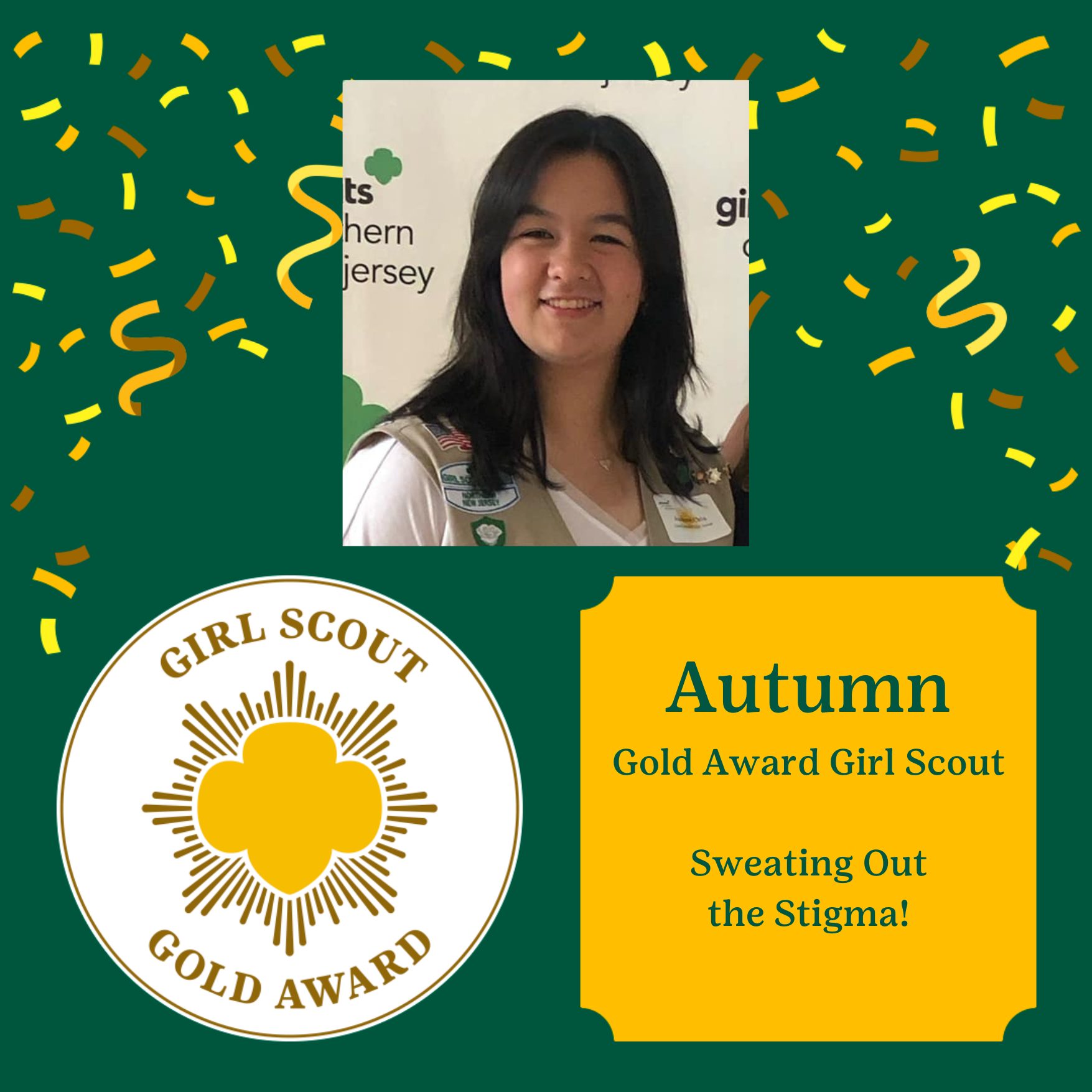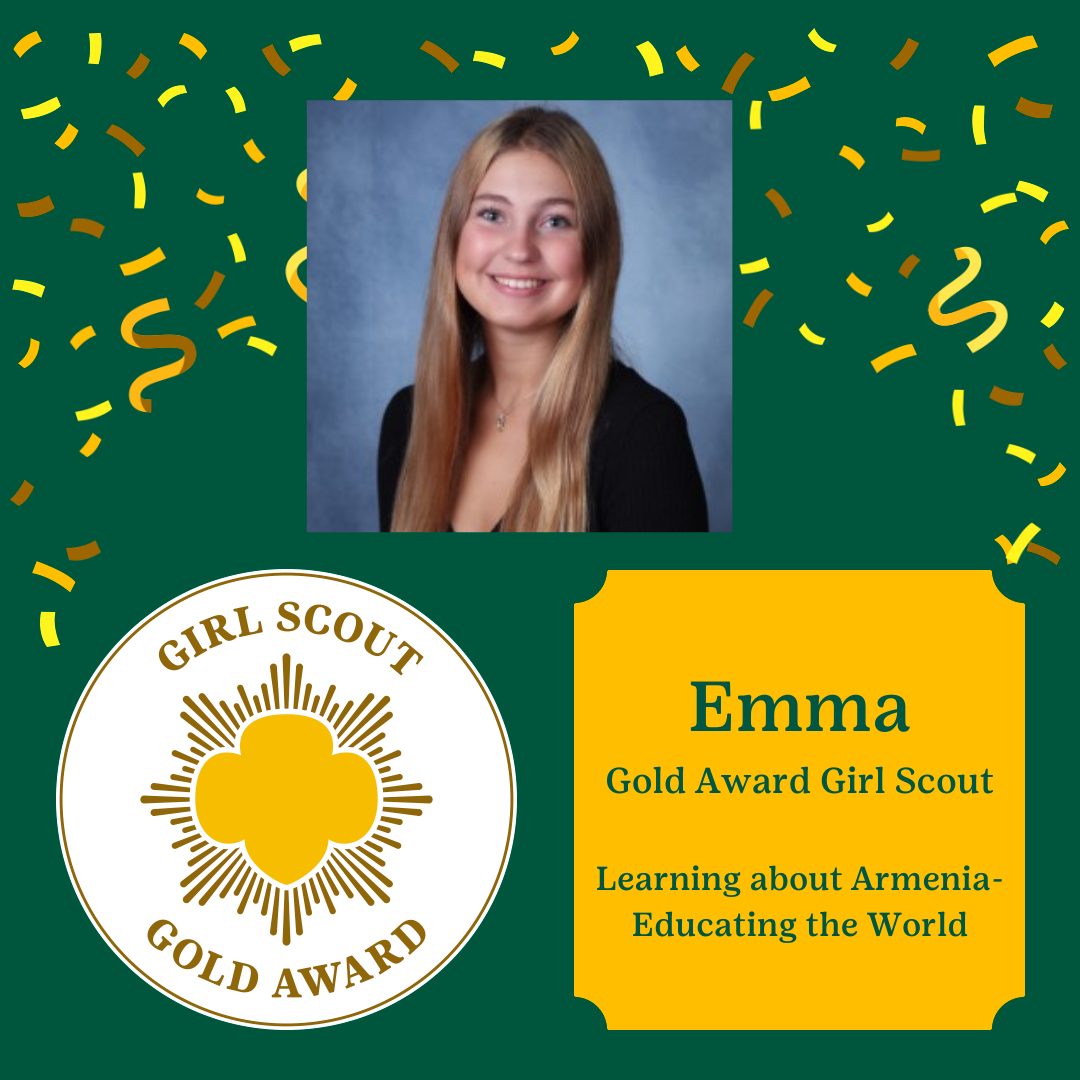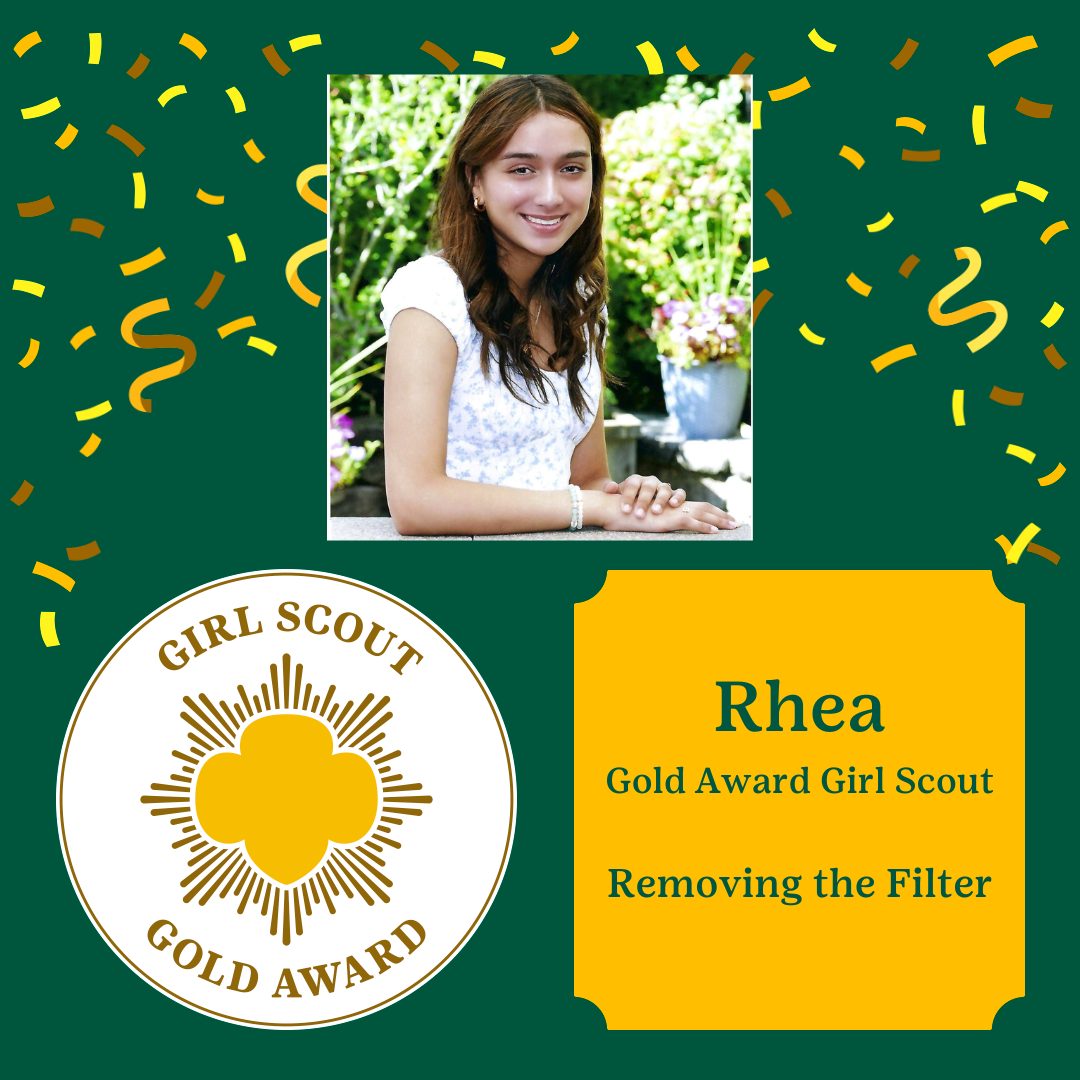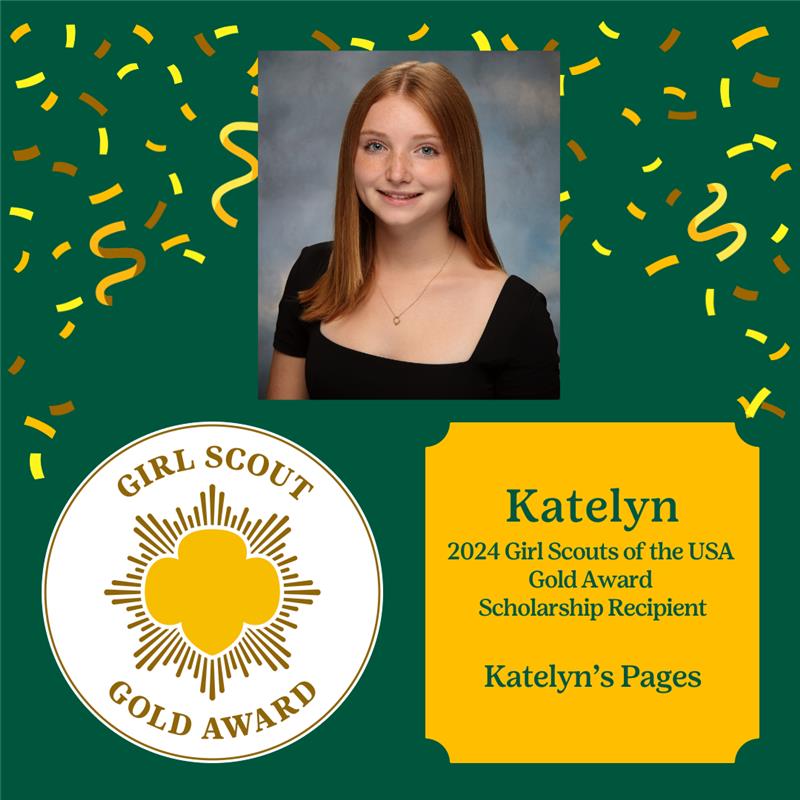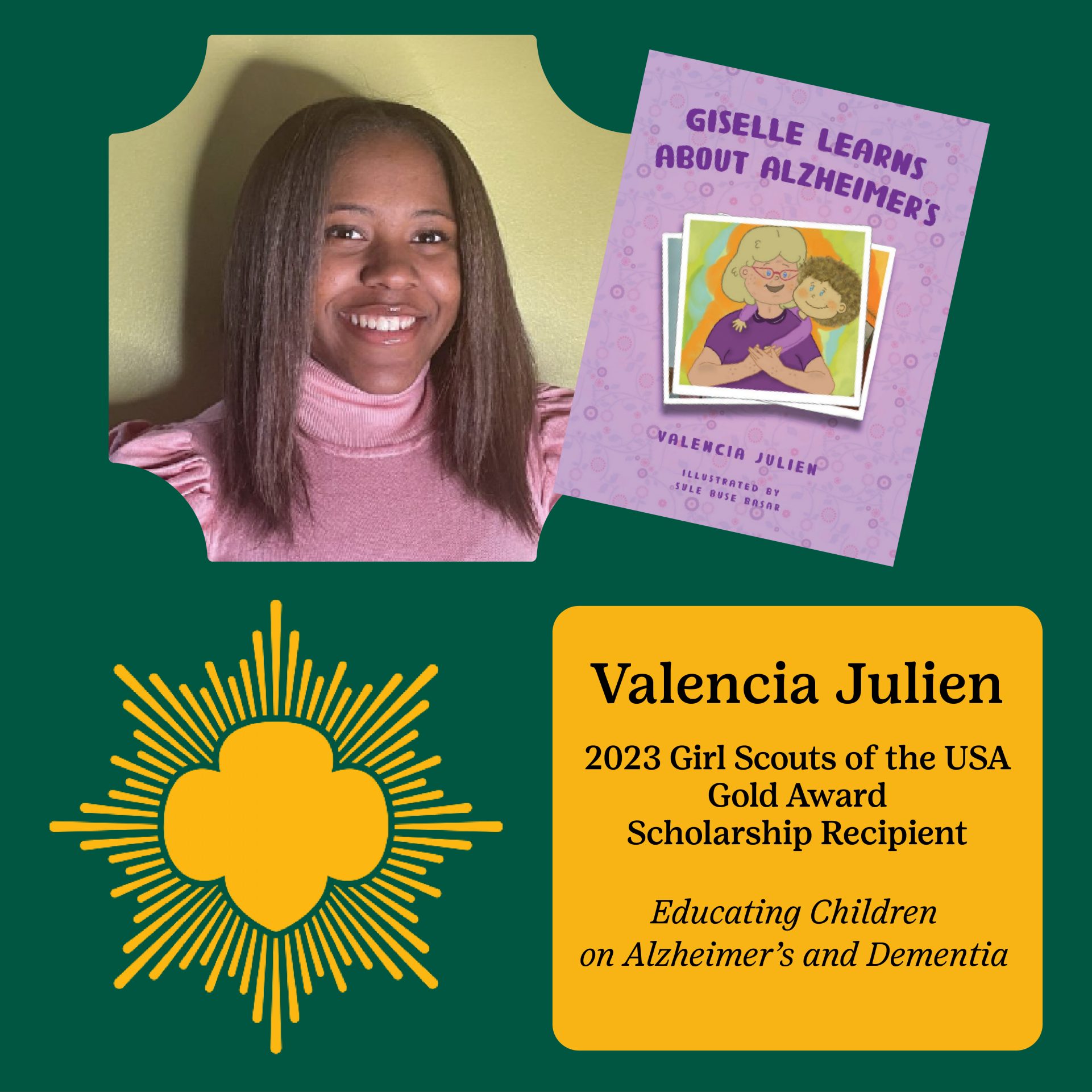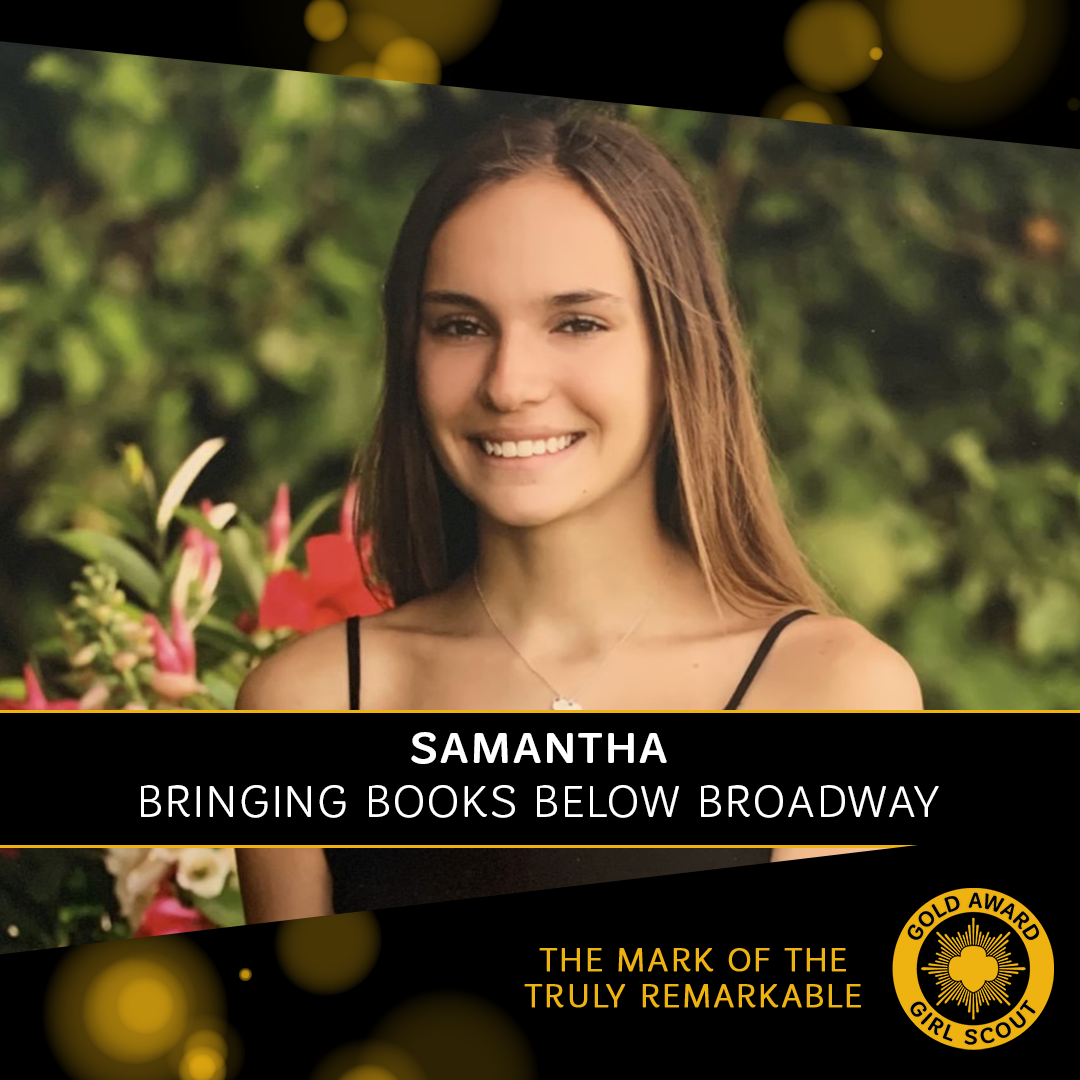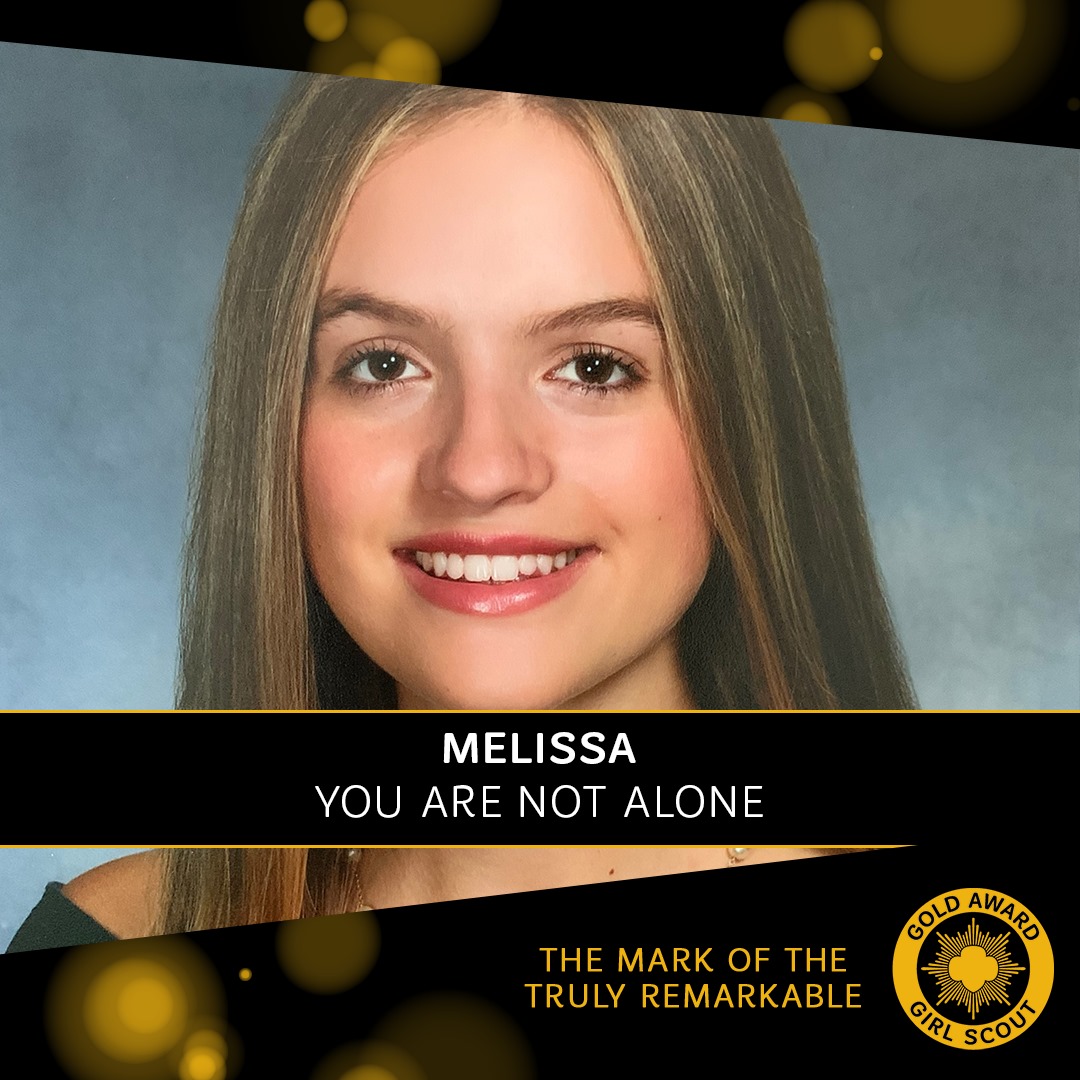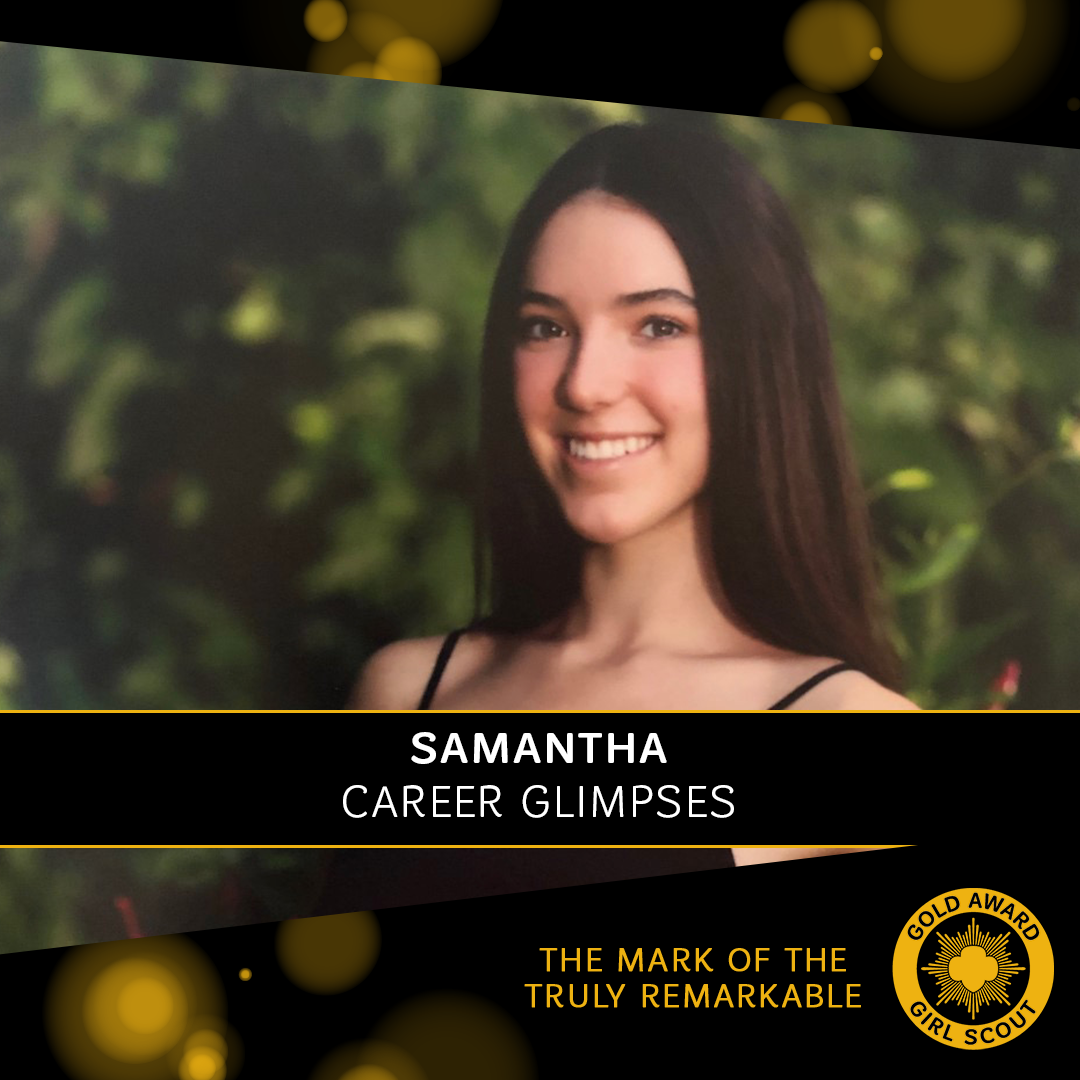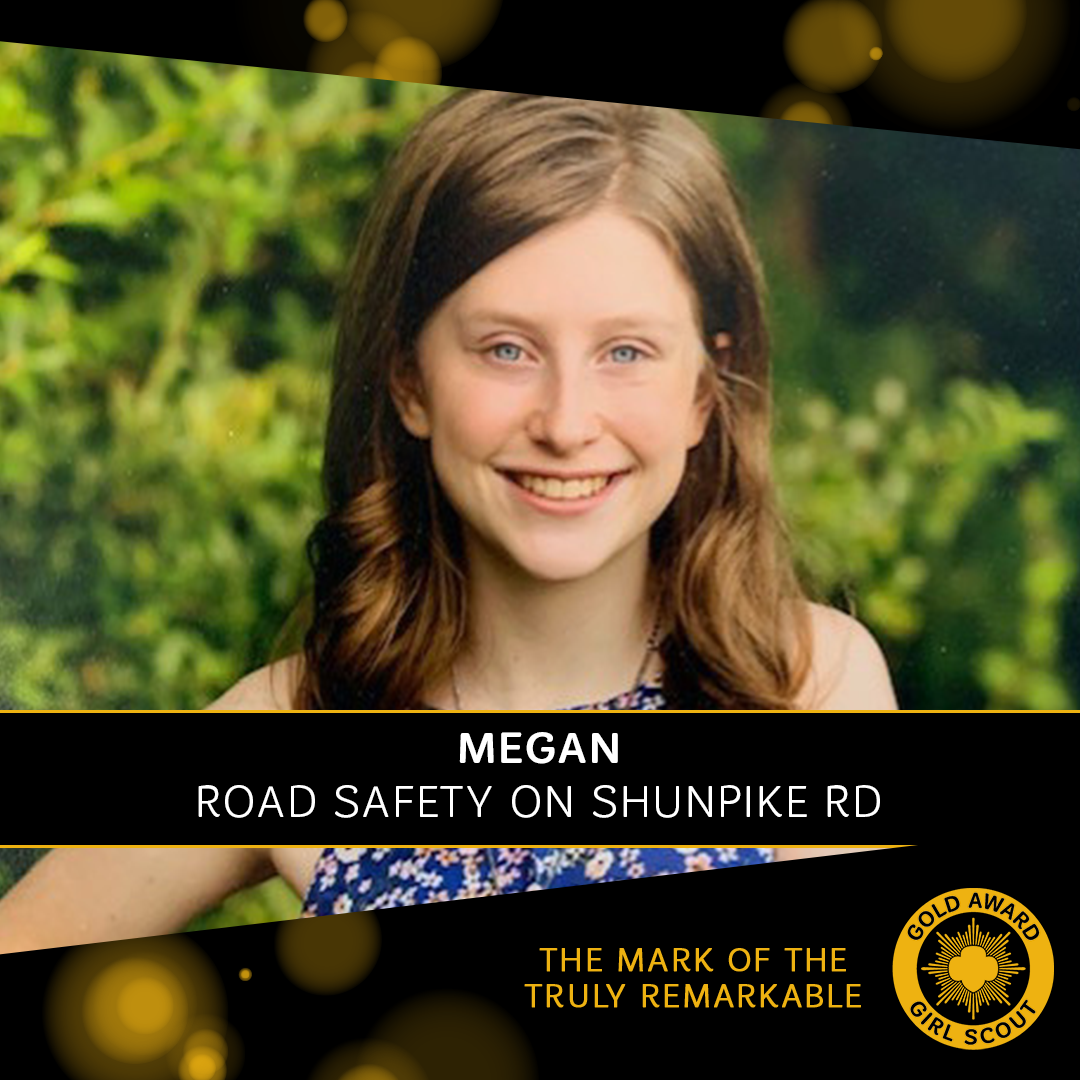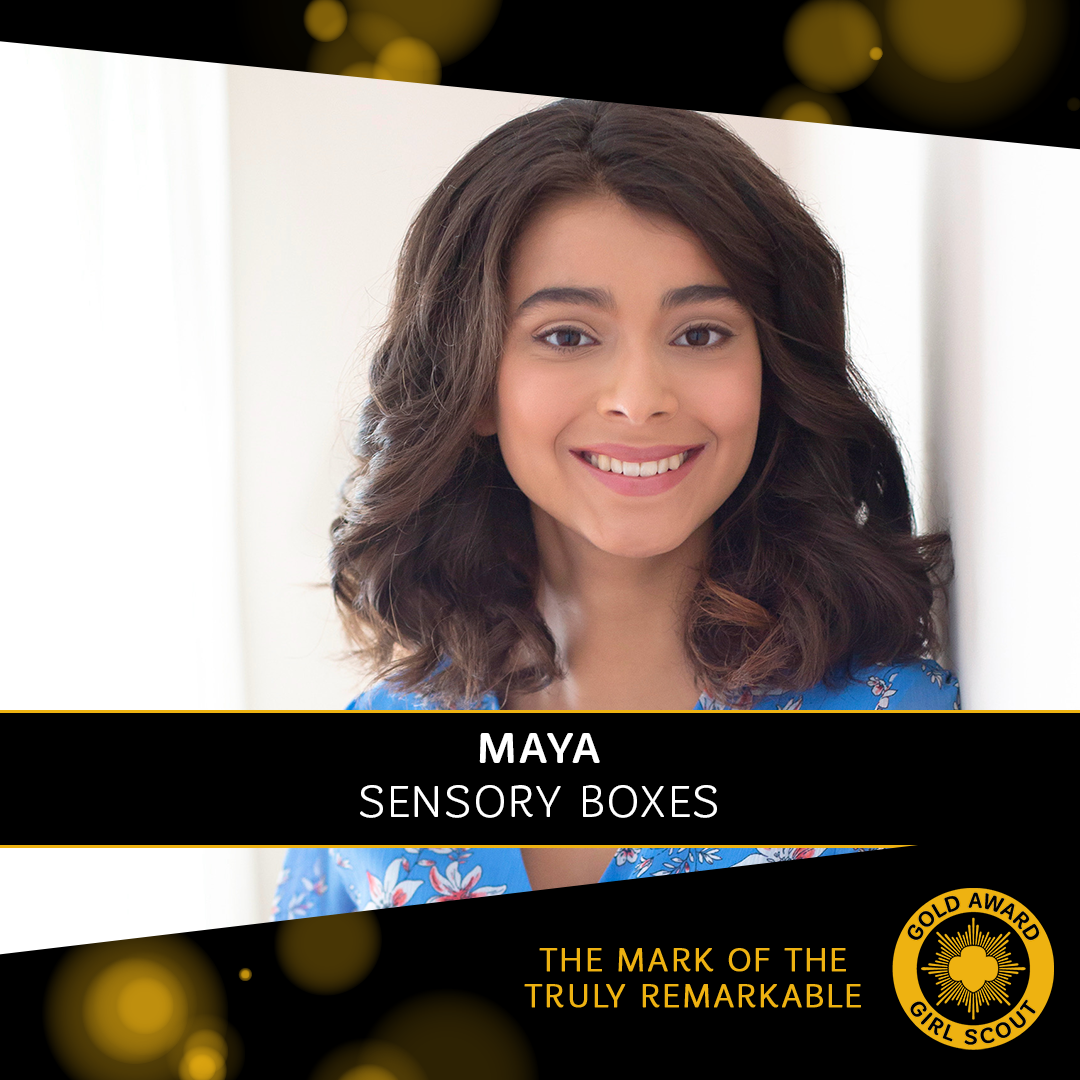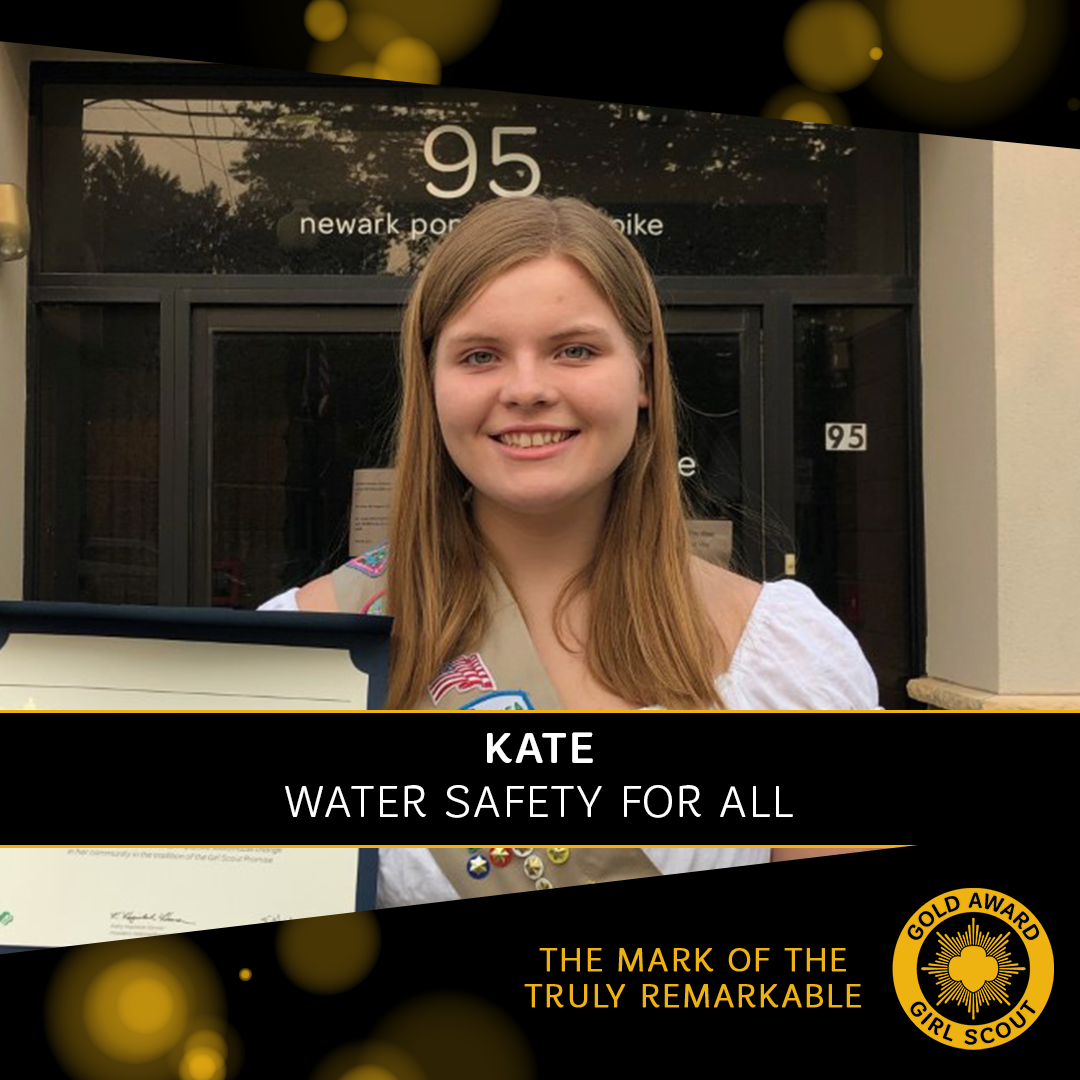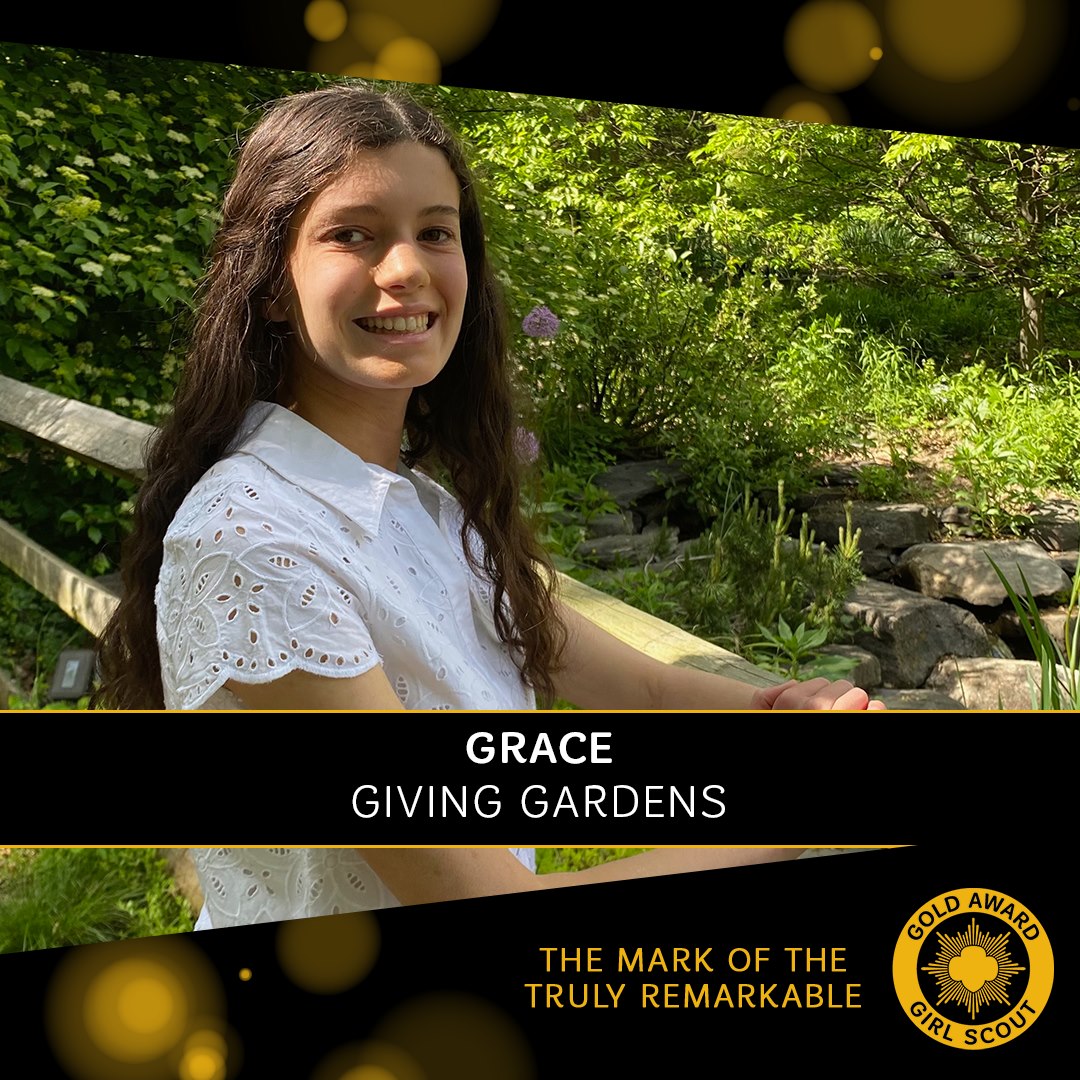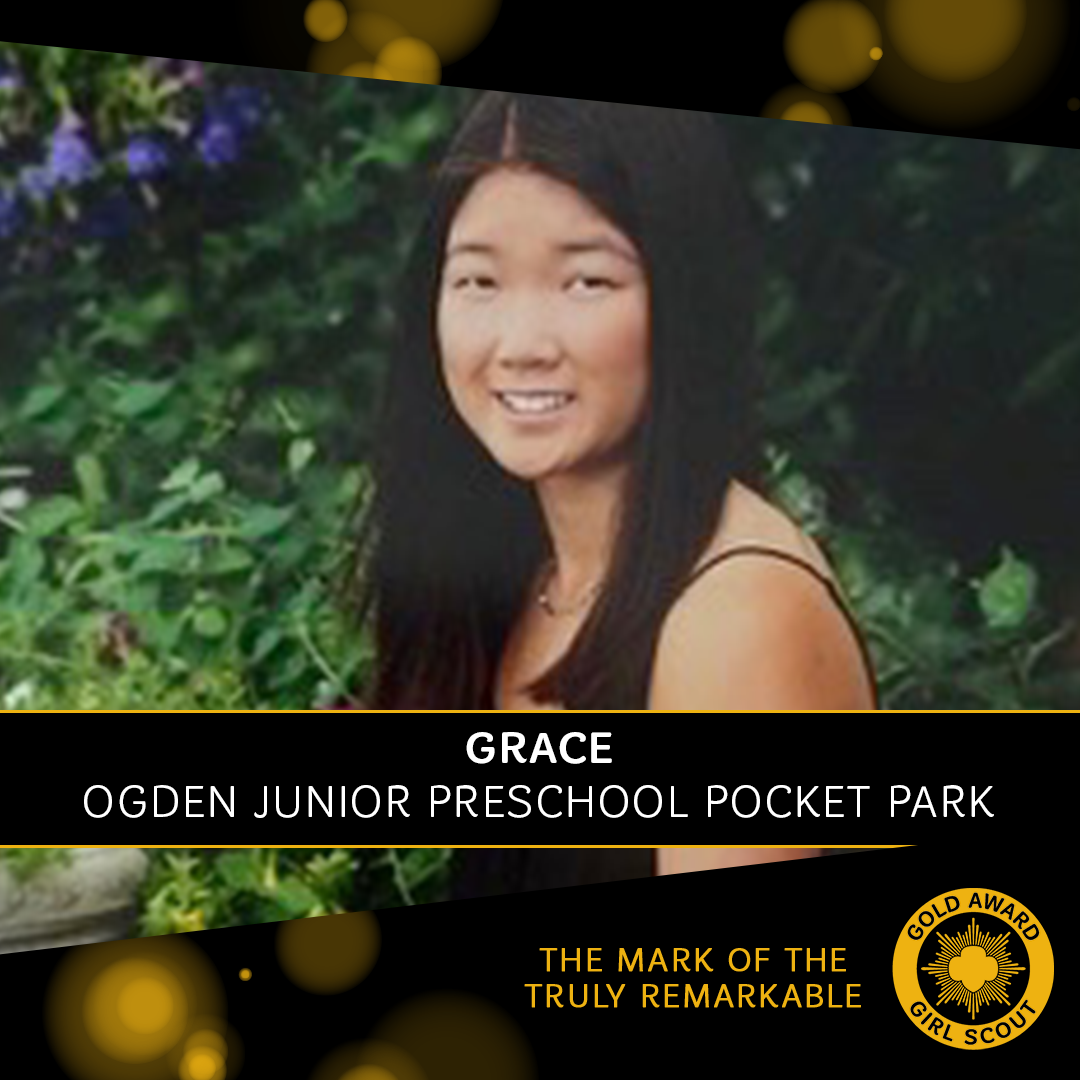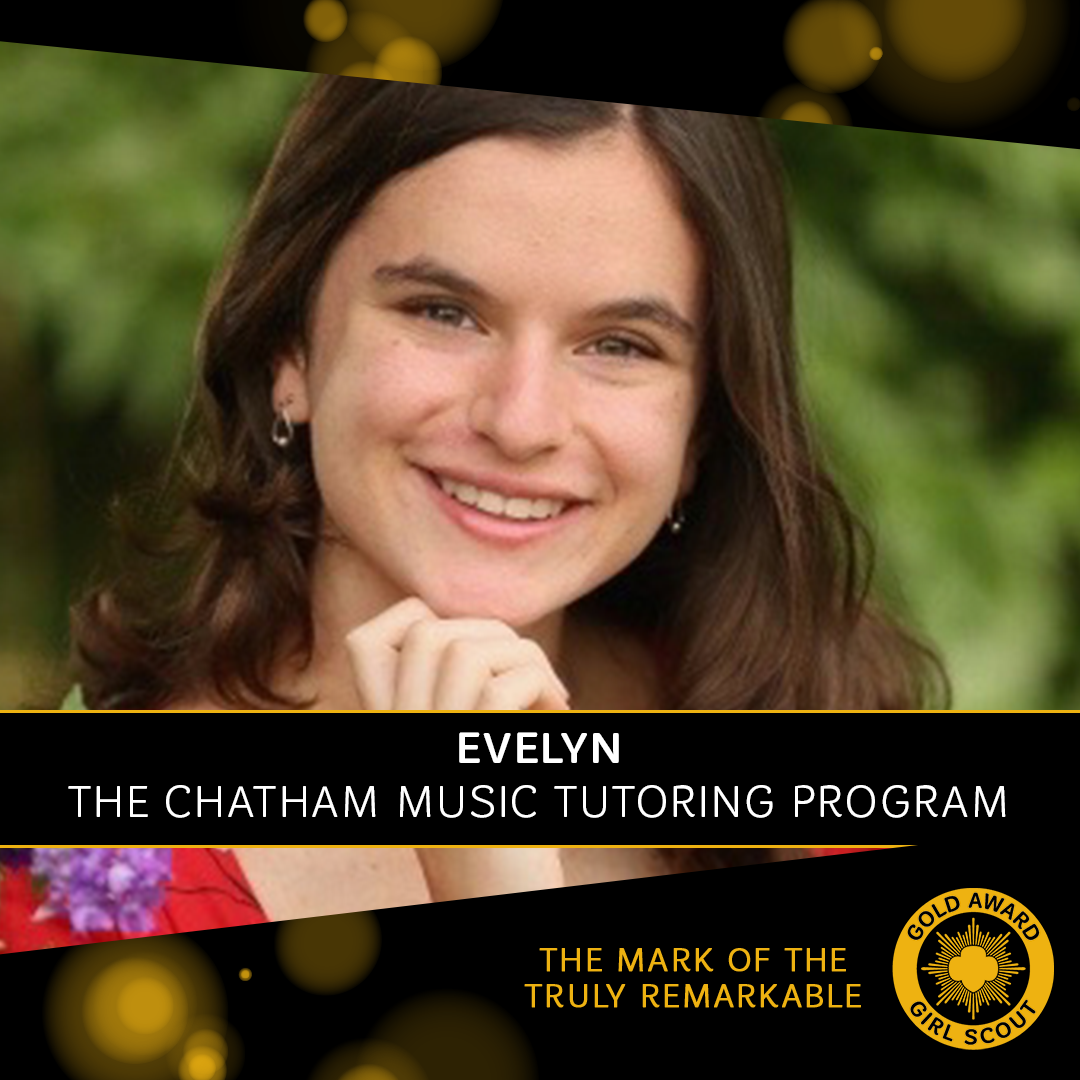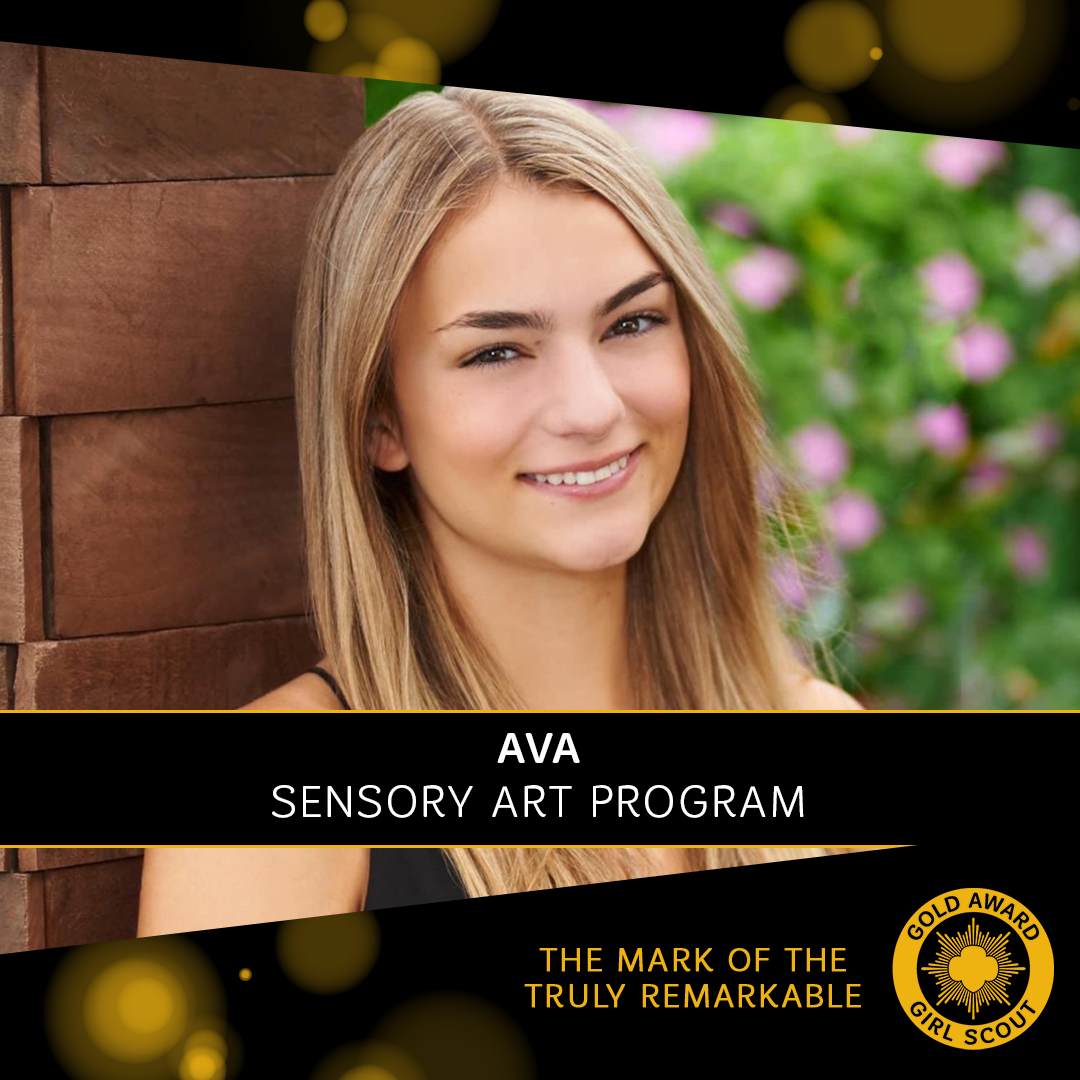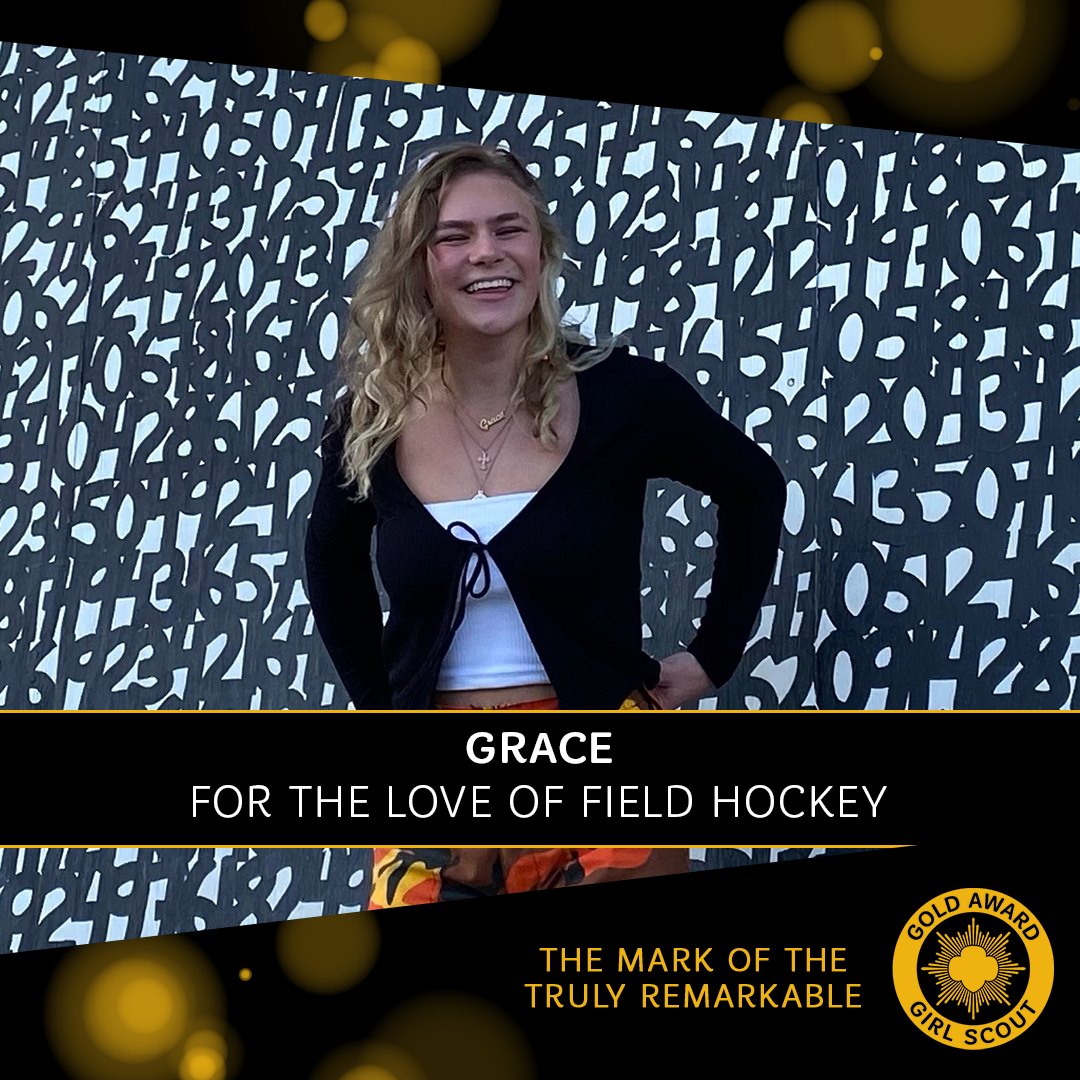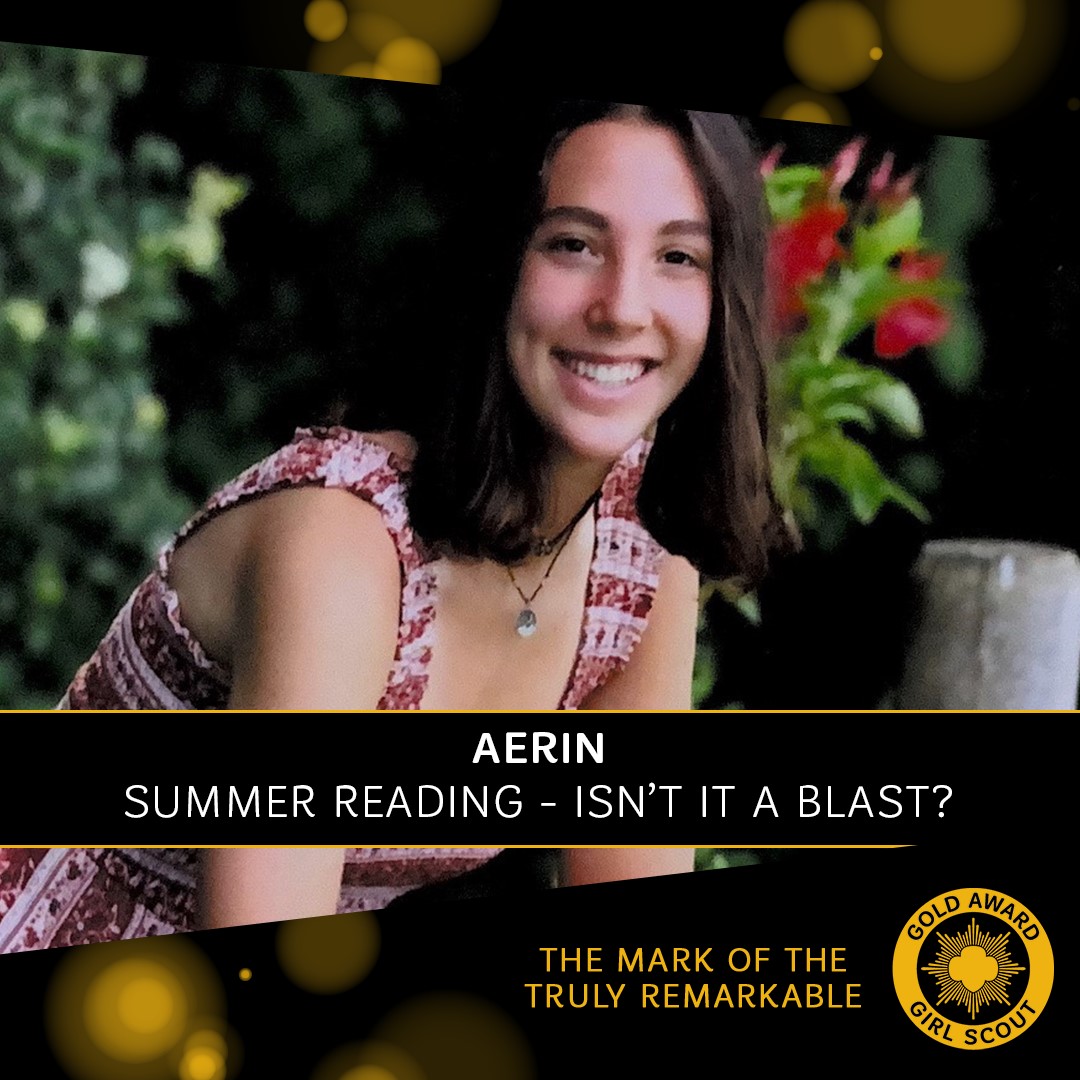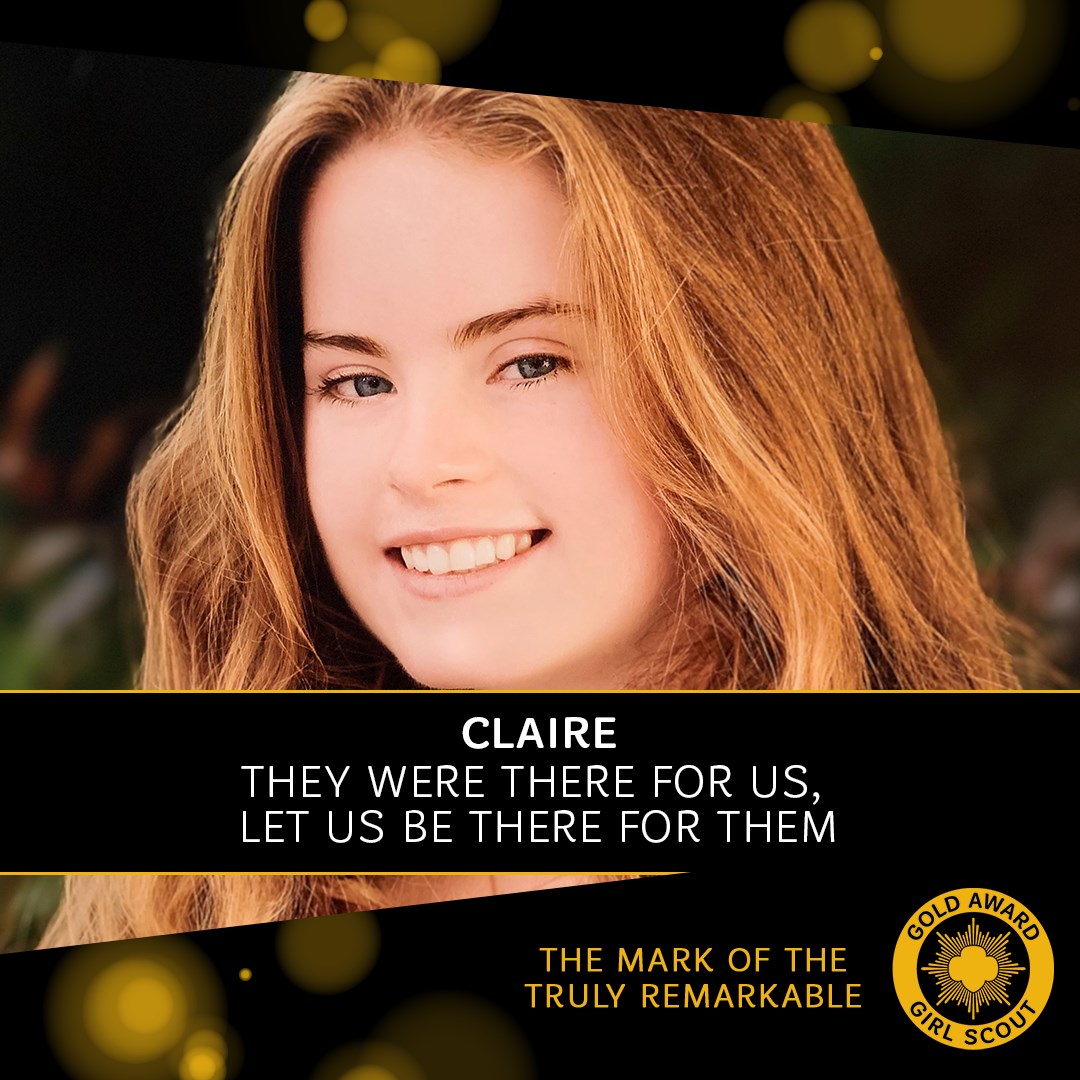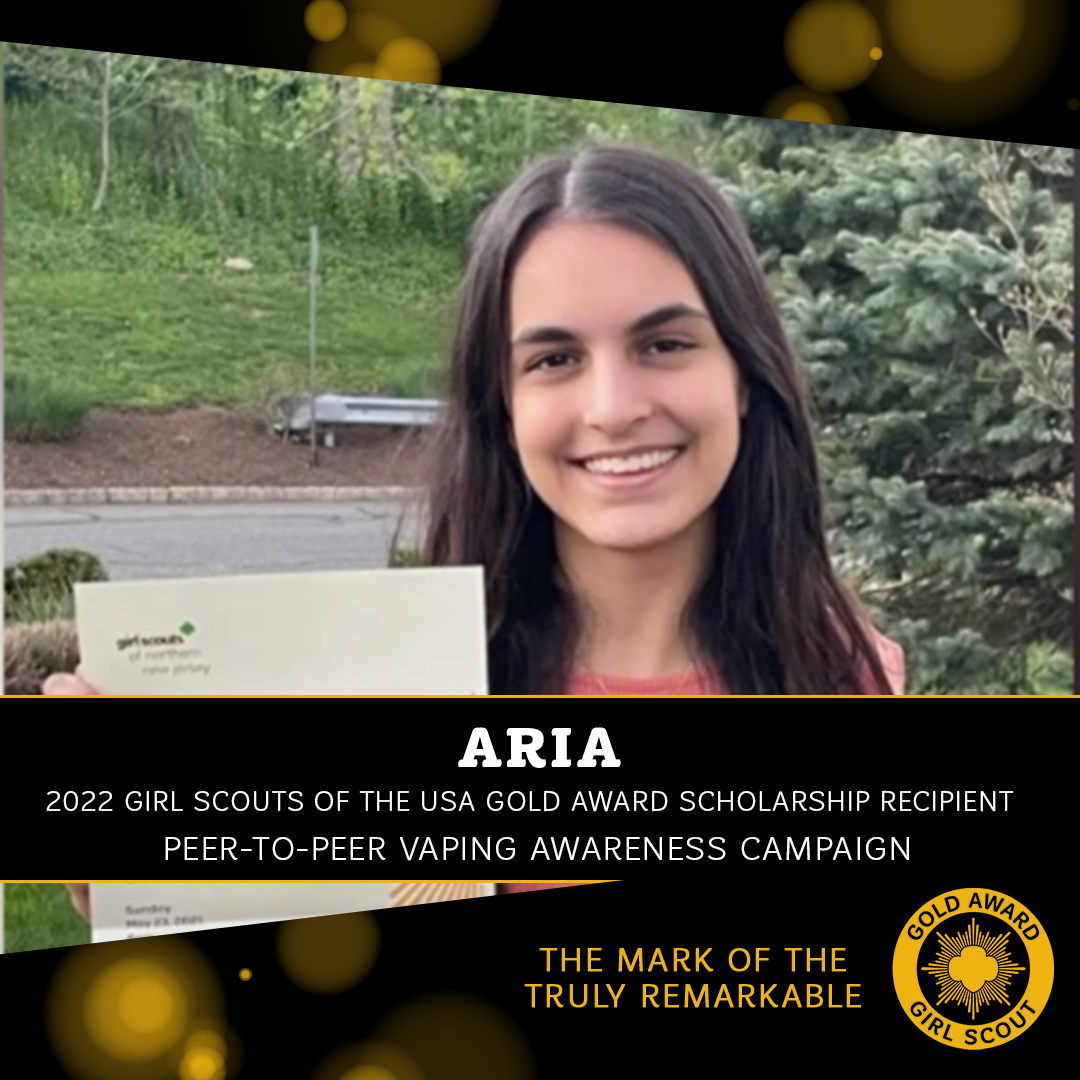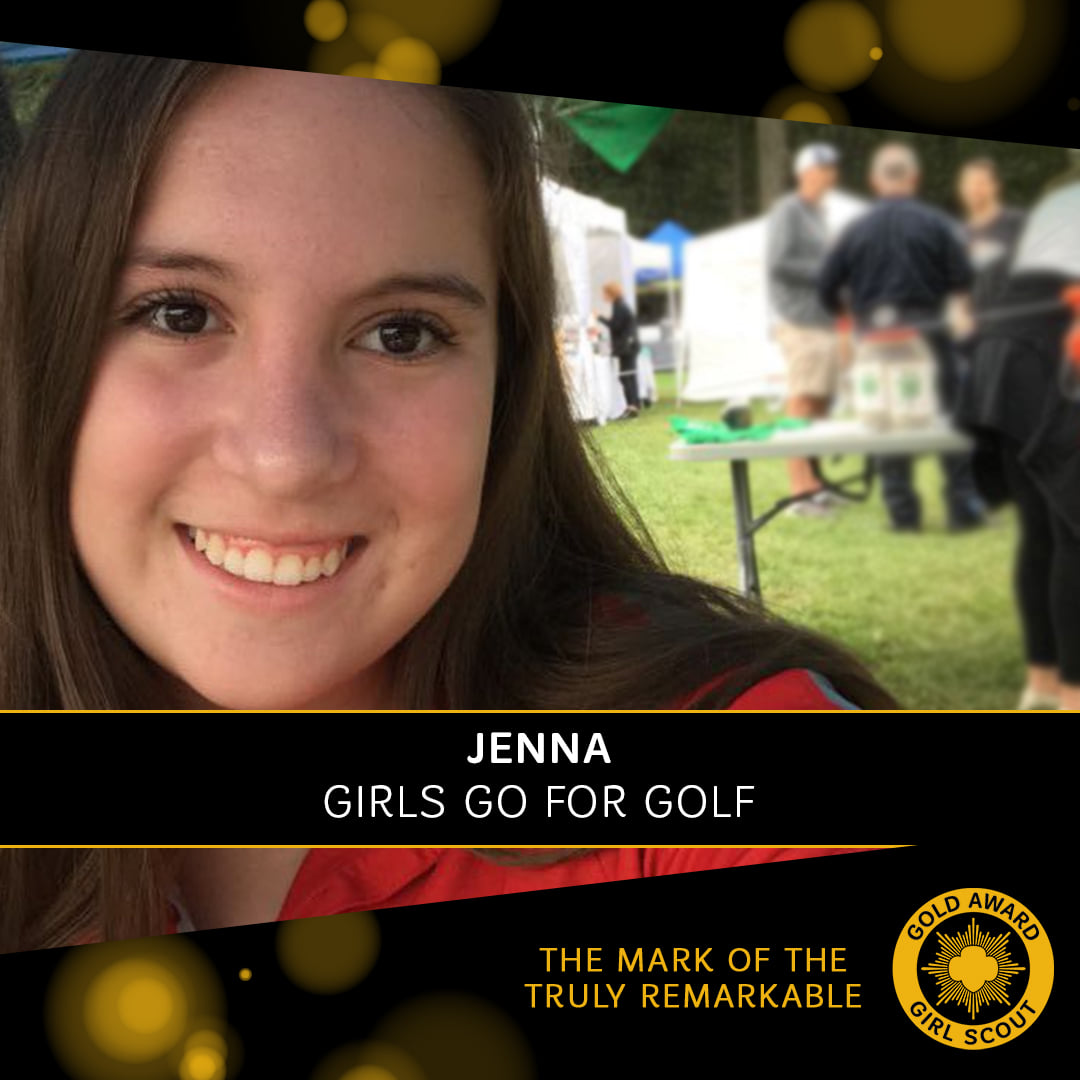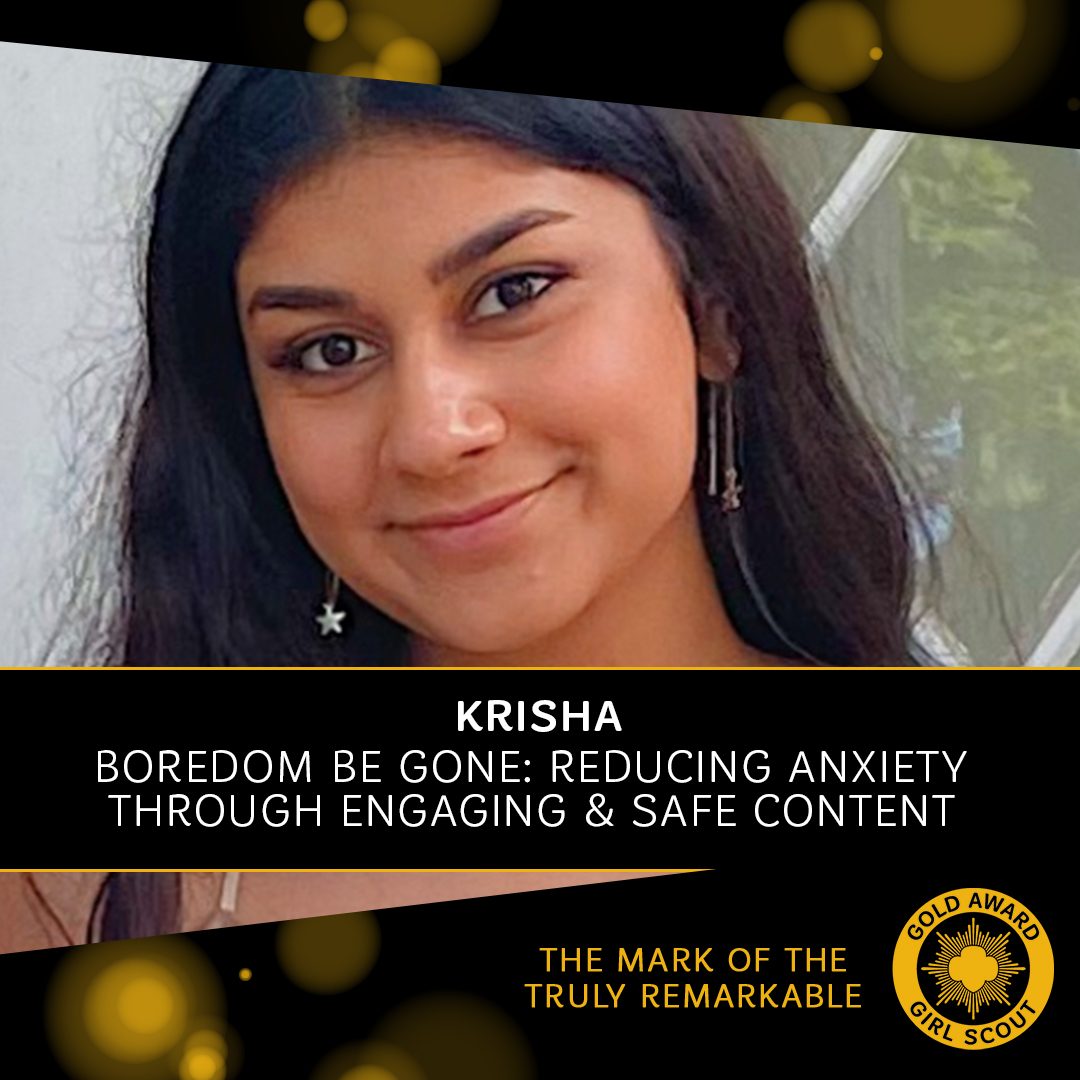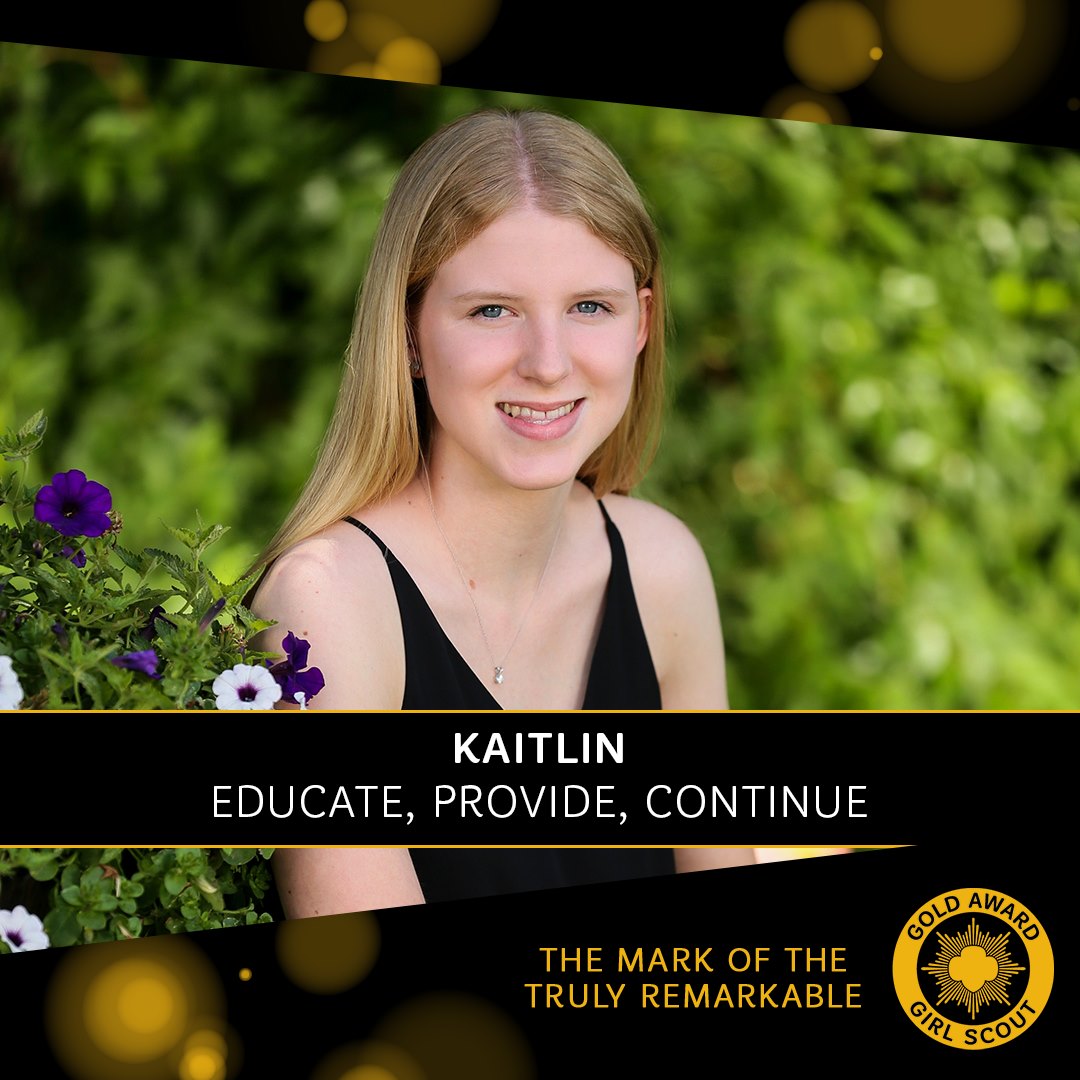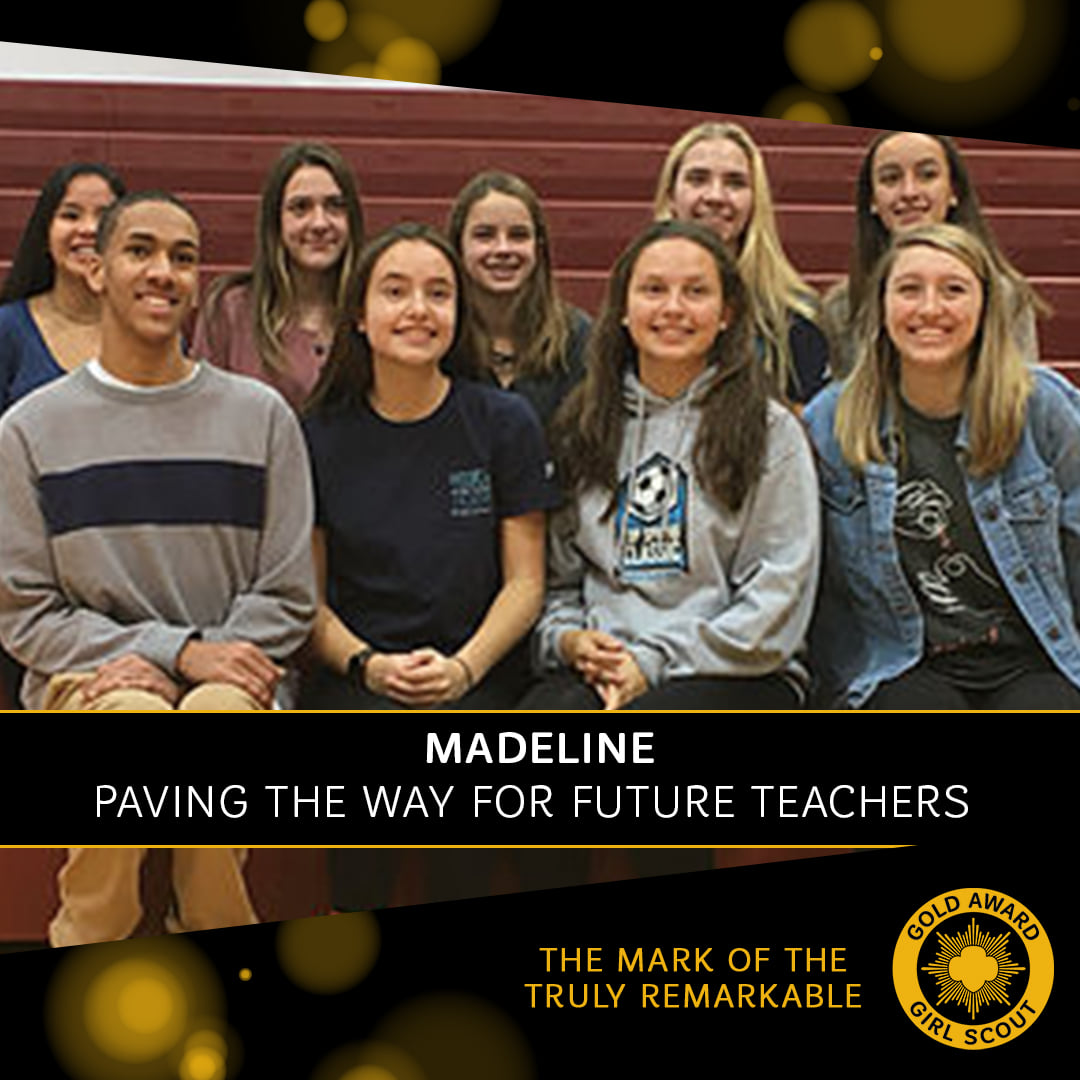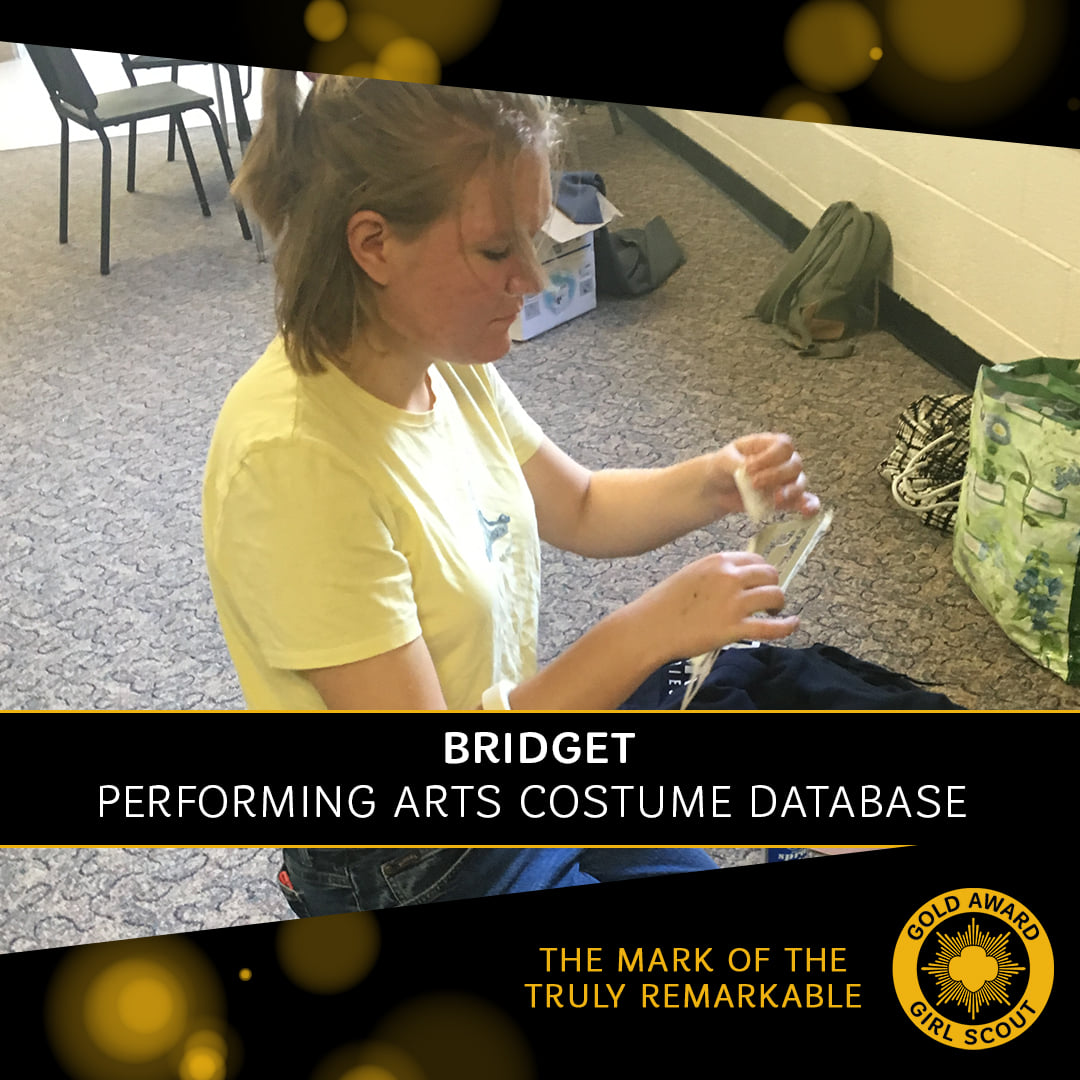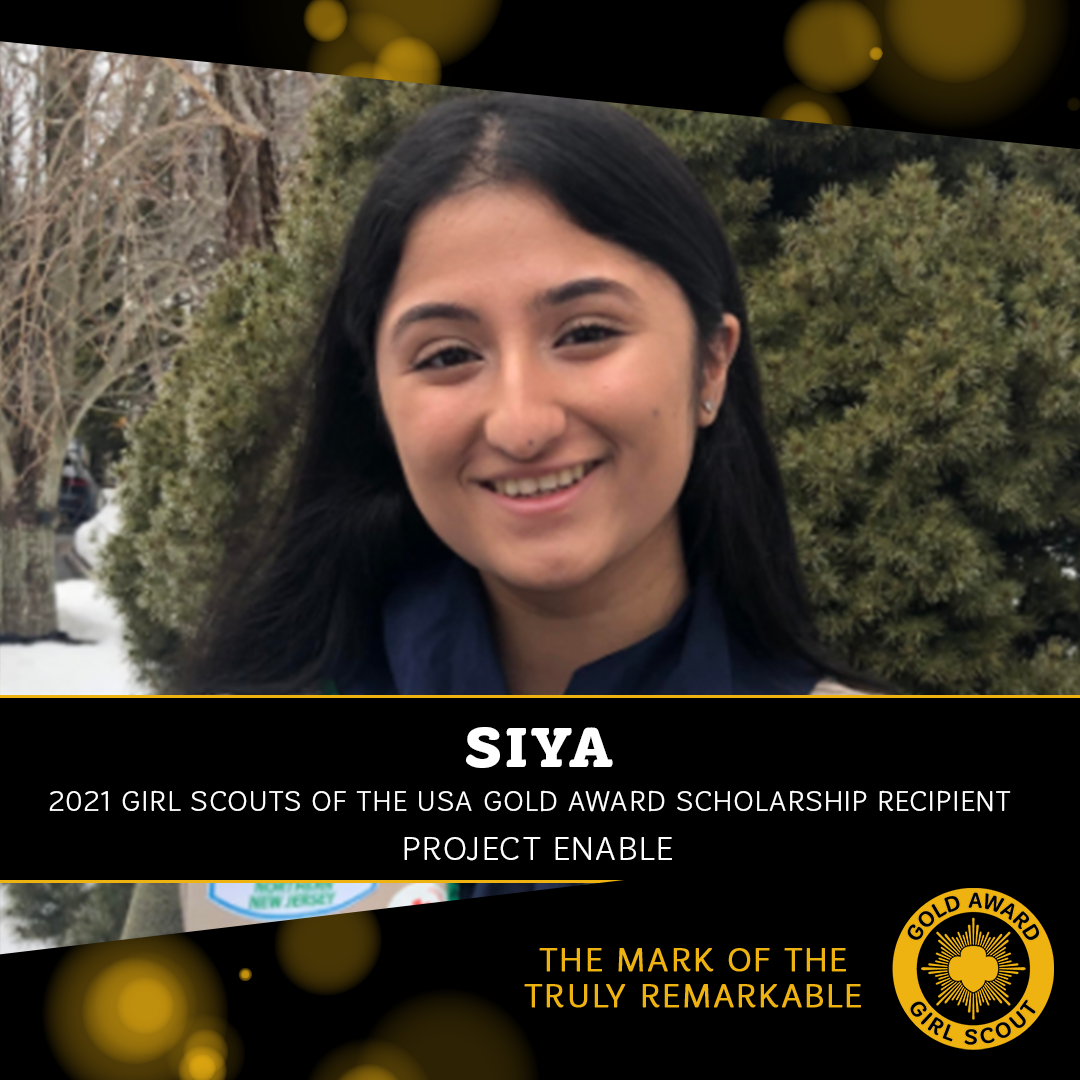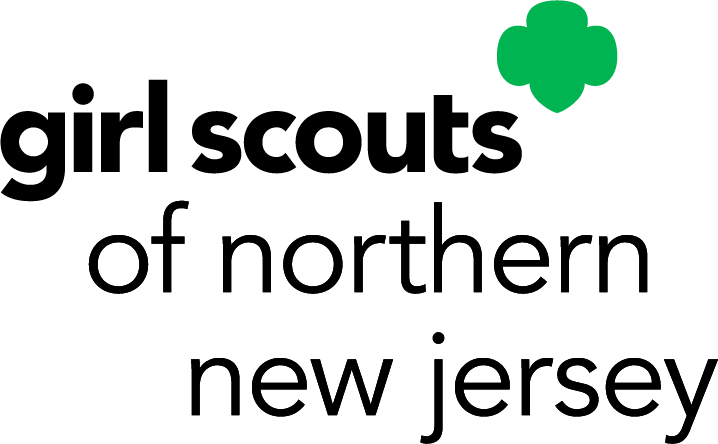
Girl Scouts of Northern New Jersey proudly recognizes those members who earned the highest award in Girl Scouting, the Girl Scout Gold Award.
Earning the Girl Scout Gold Award requires girls to complete a significant and sustainable service project that demonstrates leadership, planning, and a commitment to community improvement. Each girl earning this distinct honor has dedicated a minimum of 80 hours to make their project a reality. The skills and experiences gained through this process are invaluable and can set applicants apart in the college admissions process and professionally.
To earn their Girl Scout Gold Awards, our members identified issues in their communities, took action, and found or created solutions to address real-life problems such as environmental sustainability, racial justice, challenges to mental and physical well-being, gender inequality in STEM, and more. Through their take-action projects, Gold Award Girl Scouts demonstrate the breadth of issues American teens feel are most prevalent in society today.
In addition, Girl Scouts of the USA awards annual Gold Award Scholarships that recognize one outstanding Gold Award Girl Scout per council each year. These girls have been selected because their project exemplifies the core components of the Gold Award, and they demonstrated extraordinary leadership to drive lasting change in their community and beyond.
We encourage you to review and celebrate with us the work of many of our Gold Award Girl Scouts as noted below. Be sure to revisit this web page periodically as it is updated.
Girl Scout Sophia from Mountain Lakes earned the Girl Scout Gold Award for her project: Phenomenal Foster Pets.
Sophia’s project educated her community about the importance of fostering animals in order to reduce animal shelter overcrowding. Sophia created a fun patch to teach children and adults how easy fostering is along with providing resources to find foster opportunities across the country. Through her advocacy, Sophia was also able to make June Foster a Pet Month in New Jersey.
Girl Scout Elizabeth from Mountain Lakes earned the Girl Scout Gold Award for her project: Mountain Lakes Wildlife.
Elizabeth hoped to make her town more wildlife-friendly through educating her community on the importance of native pollinator wildflowers. Elizabeth was able to plant pollinator wildflowers throughout her community and work with her mayor to proclaim Monarch Butterflies Day in New Jersey.
Girl Scout Chloe from Butler earned the Girl Scout Gold Award for her project: Hands of Outreach.
Chloe’s project addressed the lack of knowledge around the deaf community and American Sign Language (ASL). Chloe created an American Sign Language Club at her schools to inform peers of the deaf culture and introduce them to another language. She also created communication boards in libraries to help educate the community on communicating with the deaf.
Girl Scout Alexandra from River Vale earned the Girl Scout Gold Award for her project: Honoring Our Hometown Veterans.
Alexandra created a Veterans Banner program in her town in order to increase veteran awareness and appreciation within her community. Alexandra was able to honor 53 veterans through these banners, with all banners on display before Memorial Day.
Girl Scout Anhad from Morristown earned the Girl Scout Gold Award for her project: MoTown Girls STEM it!
Anhad worked with Morristown Neighborhood House to create a STEM program for low-income and new resident children in hopes to create awareness of the importance of STEM education for young girls. Anhad also created a website that offerened free resources for kids to engage in STEM activities and learn more about different STEM careers.
Girl Scout Kelly from Rockaway earned the Girl Scout Gold Award for her project: Tales and Trails of Rockaway.
Kelly created twenty accessible walking routes in her town, adding historical facts throughout the routes in order to draw attention to the trails. Kelly created these routes to encourage individuals to get outside, get active, and learn more about the community they live in. .
Girl Scout Madelyne from North Warren earned the Girl Scout Gold Award for her project: Creative Space = Happy Place.
Madelyne’s project addressed the issue of mental health amongst students through creating murals in her school’s bathrooms in order to leave a positive impacts on student’s moods and overall well-being.
Girl Scout Mackenzie from North Warren earned the Girl Scout Gold Award for her project: Bee Real.
Mackenzie’s project addressed the decline of pollinators, specifically mason bees, in her community. She reached out to local farmers and built bee houses on their farms in order to help yield more crops. Mackenzie also connected with her local community to educate them on the importance of pollinators and ways they can increase the pollinator population in their own home.
Girl Scout Rebecca from Morristown earned the Girl Scout Gold Award for her project: Coming Clean About Cancer.
Rebecca raised awareness about how people care for those with cancer; she created and distributed pamphlets covering the basics of cancer, common treatments and tips, mental health, and lived experiences. Rebecca also utilized social media and held two information sessions to present this information and hold conversations about this important topic.
Girl Scout Phoebe from Morristown earned the Girl Scout Gold Award for her project: First Aid Squad Reboot.
Phoebe provided essential support to her local volunteer First Aid Squad by redesigning their outdated website with more information regarding how to become a member, donate, or attend a class. An Instagram account was also created in order to reach younger generations and to bring more traffic to the new website.
Girl Scout Maddie from Sparta earned the Girl Scout Gold Award for her project: Career Decision Readiness for High Schoolers.
Maddie created and organized a Speed Networking Career Fair at her high school, hosting a variety of professionals in different fields. The fair was held during the school day, making it easier for students to attend and learn about career options they may not have been able to otherwise.
Girl Scout Liani from New Milford earned the Girl Scout Gold Award for her project: It's Time to Log Off.
Liani’s project addresses the issue of screen addiction and anxiety through four educational sessions teaching participants about the harms of excessive screen time, along with a board game night to encourage lowered screen time. Liani also distributed educational pamphlets to over 200 people to help spread awareness about screen addiction.
Girl Scout Kerry from Mahwah earned the Girl Scout Gold Award for her project: Serenity Steps.
Kerry created a mindful labyrinth in her school as a space for her peers to engage in reflection and meditation, encouraging them to take a break from their daily pressures and connect with their thoughts in a peaceful setting. A QR code in the room included mental health resources such as quotes, calming music, and guided breath exercises.
Girl Scout Isabella from Glen Rock earned the Girl Scout Gold Award for her project: The Coral- A Sensory Room for Children.
Isabella created a Sensory Room in an elementary school for children, particularly those with neurodevelopmental disorders, to help them deal with stress, or needed a place to take their mind off schoolwork.
Girl Scout Emma from Allendale earned the Girl Scout Gold Award for her project: Bending Back: Empowering Scoliosis Awareness.
Emma created educational videos discussing the symptoms and treatments of scoliosis, along with teaching students how to conduct proper check-ups. Emma met with school nurses in order to implement her educational videos into the health curriculum of two different schools.
Girl Scout Dana from Lyndhurst earned the Girl Scout Gold Award for her project: Better Environment, Better Tomorrow.
Dana’s project addressed the lack of education about our daily impact on the environment. In order to create awareness, Dana hosted a town-wide cleanup, shared crafts that reused objects that a typically disposed, and made pamphlets educating readers on how they can alter their lifestyle to protect the environment.
Girl Scout Danielle from Newton earned the Girl Scout Gold Award for her project: Little Readers – Future Leaders.
Danielle’s project addressed the importance of book access and reading in her community. Danielle partnered with local laundromats to set up “Little Laundromat Libraries,” providing a selection of 40 to 50 books for families to read while waiting. The project also held Book Adoption events and a Reading Buddies mentorship program.
Girl Scout Sofia from Upper Saddle River earned the Girl Scout Gold Award for her project: Sports Empowers Yourself.
Sofia hopes for a more positive sports environment, and to ensure that within her community she educated parents and coaches on positive reinforcement, realistic expectations, and prioritizing enjoyment over competition. Using advice from 17 different athletes, Sofia was able to create an educational video aimed at coaches.
Girl Scout Erin Rebecca from Hackettstown earned the Girl Scout Gold Award for her project: St. Luke’s Blacktop Playground.
Erin Rebecca felt St. Luke’s preschool lacked a space for children to spend time outside. To help increase the children’s time spent outside, she created a play space with a variety of games for the children to play on.
Girl Scout Michelle from Pequannock earned the Girl Scout Gold Award for her project: Developing a STEM Sisterhood.
Michelle felt that many young girls were not being introduced to STEM early on. By meeting with various community members, Michelle created a website to showcase her findings along with fliers providing readers with STEM resources.
Girl Scout Grace from Wyckoff earned the Girl Scout Gold Award for her project: Woman in Business.
Grace created a club to addresses the lack of women in leadership position in the business field. Using her club, she created a safe space for the girls of Ramapo High School to learn about different fields of business, network with leading women in business, and create relationships with other members of the club.
Girl Scout Kathryn from North Warren earned the Girl Scout Gold Award for her project: Our Veterans’ Stories.
Kathryn honored veterans buried in her local cemetery by locating and identifying veterans and the wars they fought in. Kathryn created a map with the location of the veterans’ graves and marked their grave with a laminated number.
Girl Scout Emily from Ramsey earned the Girl Scout Gold Award for her project: Grace’s Upper Rooms.
Grace Church was lacking an organization system to their upper rooms, preventing church staff from efficiently accessing the items they need. Emily reshelved and reorganized these upper rooms through donating unused items and installing new shelving and storage units, allowing the Grace church community to have easy access to these rooms and their belongings.
Girl Scout Alyssa from New Milford earnedthe Girl Scout Gold Award for their project: Pollinators and Permaculture.
Ayssa’s educational presentation and workshops at the New Milford Library addressed the pollinator decline in her community. She discussed the importance of native plants, the dangers and alternatives to pesticides, companion planting, and methods to grow native plants in your own backyard.
Girl Scout Anna from Ridgewood earned the Girl Scout Gold Award for their project, Tech Savy Seniors: Empowering the Elderly in the Digital Age.
In a technology class, Anna taught seniors in her community various iPhone features by simplifying complex technology. Through handouts with simplistic visuals and step-by-step images, Anna was able to provide guidance for both easy and difficult tasks on the iPhone. Anna also centered part of her classes and pamphlets on accessibility issues such as hearing and vision loss, and taught seniors how to make their iPhones more accessible.
Girl Scout Alyssa from River Vale earned the Girl Scout Gold Award for her project: Food Allergy Awareness.
Through a presentation and three informative YouTube videos, Alyssa educated her community on what it means to be allergic. She tackled common misconceptions, along with sharing a variety of facts and information on food allergies. She also shared how everyone can do their part in making their community safer for those with allergies, including participating the Teal Pumpkin Project.
Girl Scout Emily’s
courageousness to speak about her own medical journey inspired her
project, aimed at giving social support to students who may feel left
out due to unexpected absences and challenges. Once a month, Emily sends
out care packages to remind students that they are appreciated and missed.
Girl Scout Maria from Tenafly was our council's recipient of the 2025 GSUSA Gold Award Scholarship for her project: My Missing Playmate.
Maria curated a collection of children’s picture books to help young children, and their families, begin the difficult conversation around sibling loss—specifically, loss due to stillbirth. Her project addressed the lack of accessible, age-appropriate resources to support children like herself who grow up in families touched by this quiet, often unspoken grief.
Gold Award Girl Scout Natalia
was concerned about how much waste was being produced and disposed of
each day at her high school during lunchtimes. She developed her Girl
Scout Gold Award take-action project to find a better way of managing
the waste. Being a member of the Green Team at West Morris Central High
School in Chester, she set out to lead the team to build three compost
bins in the school garden and establish a system to collect school food
waste. She created a YouTube video and shared her success with the New
Jersey Composting Council to promote composting in schools around the state.
Gold Award Girl Scout Shaye
addressed the need for adapting toys for children with special needs.
She shared what she learned with other Girl Scouts and their families,
teaching them how switches work and how to create battery interrupters,
so that others would be more aware of this need in the world. Shaye was
able to donate 32 altered toys to schools for children with special
needs. She even reached out to and met with the marketing and product
development team at the Target Corporation to present her ideas for
adapting switches on toys.
Gold Award Girl Scout Kareena
focused her take-action project on the world water crisis. She studied
the water crisis in India, created an educational program for
middle-school children, and produced a series of podcasts on the subject
entitled, “One Drop at a Time,” during which she interviewed leaders and
experts on the issue. She reached out to the Eileen Fisher Corporation
to learn more about their work in water conservation and to interview
their staff, which availed her of the opportunity to participate at a
conference with the company’s Social Consciousness team and create a
video presentation that was shown company wide. Kareena also met with
students from USKids4Water (USK4W) to plan Hack4Water, a hackathon
geared towards immersing students in working to solve water-related issues.
Gold Award Girl Scout Autumn
focused her take-action project, Sweating Out the Stigma, on addressing
society’s preconceived notions about people with special needs and
challenges, particularly among high school students. Autumn created a
program that brought children with special needs together with high
school students to play Pillo Polo. She recruited and trained student
volunteers to help conduct the program. As a result, Autumn discovered
that the children involved in the event were learning to work with
others, were gaining confidence, and were improving their coordination,
while the volunteers were gaining a better understanding of the special
needs community and learning to see each person beyond their disability.
Gold Award Girl Scout Gianna
addressed the issue of land erosion that is linked to the high
mortality rate of sea turtles. With her take-action project, Save Her
Eggs (S.H.E.), Gianna created a website and worked to educate the
Tuckerton community about the issue, offering advice on how to handle
dead or wounded turtles or turtle eggs found in the environment.
Throughout the year, and especially prior to nesting season, the
Tuckerton Seaport distributes materials containing a QR code that links
to her website.
Gold Award Girl Scout Kathryn
established Empowerment Hikes for women in the Ramsey area, which she
designed to increase the knowledge of women in history. After
researching leading women in various fields, including STEM, politics,
and local history, Kathryn shared their stories during community hiking
trips, as well as promoted the hikes and information on social media and
in her school.
Gold Award Girl Scout Emma
focused on educating her community about the rich history of Armenia
and the current struggles of the country’s people in her take-action
project, Learn About Armenia. Being of Armenian heritage, Emma’s project
was deeply personal. She created a website that includes interviews with
Armenian people and showcases their culture, history, art, religion, and education.
Gold Award Girl Scout Rhea
named her take-action project, Removing the Filter, and set out to
create a social media movement towards building self-confidence and
emotional well-being among pre-teens and teens. She hosted a series of
local workshops that promoted body positivity and shared activities that
could help girls combat negative self-imagery. Rhea highlighted the gaps
in her school’s health curriculum regarding these topics and met with
school officials to advocate for integrating mental health and body
positivity topics into the school curriculum.
Gold Award Girl Scout Ariel
focused her take-action project on the educational needs and rights of
students challenged with Dyslexia. She collected and donated learning
tools to her local school system and gave presentations to students and
parents about available resources to help alleviate the struggles that
students dealing with Dyslexia may experience. The Newton Town Council
was impressed by her work and issued a proclamation designating October
as Dyslexia Awareness Month in town.
Gold Award Girl Scout Hadley
addressed the lack of awareness of opportunities for women in the field
of aviation. Her Women in Flight project aimed at dispelling the myth
that aviation is a man's job. Hadley conducted local workshops for women
and girls on the topic of aviation with the intent of fostering more
interest in the field and inspiring more women to become pilots. She
packaged her plans and documents into turnkey kits for hosting
additional workshops and provided them to Lincoln Park Airport for distribution.
Gold Award Girl Scout Ishika
worked to improve the quality of life for senior citizens in nursing
homes by exploring ways to foster social interaction and combat
isolation and loneliness. Her project, Social Activities for Seniors,
included the creation of self-care kits and activity carts filled with
items curated by her community. Ishika led a campaign to encourage
fellow high school students to volunteer at the facility and showed them
how to host social activities and events among seniors.
Gold Award Girl Scout Riya
addressed the waning interest in STEM at her local middle school with
Project Revive Math League. She believed that the school’s MathCounts
program, which had been eliminated, was a key factor in inspiring
students to explore STEM careers. Her efforts to revive it resulted in
more than 35 students joining the club. Riya and her former math teacher
coached the students into becoming a competitive math team, and her blog
about her experiences continues to inspire and instruct other schools
towards establishing math clubs.
Gold Award Girl Scout Manasvi
focused her take-action project, “Special” Just Means Unique, on
addressing the lack of funding for special education programs and the
inaccessibility of helpful materials for special needs students. Manasvi
collected and distributed fidget toys for students to local schools and
hosted a presentation for teachers explaining their use. She petitioned
New Jersey government officials asking them to increase funding for
special education programs and authored an act for them to pass into law.
Gold Award Girl Scout Olivia
addressed a lack of anti-bullying education among third-grade students
in her town. Her project, It Starts with You, was designed to help these
students identify bullying and learn how to avoid or stop it. Olivia
conducted presentations at the school and provided follow-up information
for students and teachers to continue their learning. She also helped
the students establish a club that will continue to increase awareness
of bullying and prevention of it in the future.
Gold Award Girl Scout Cara
addressed the need for more hearing people to learn basic signs in
American Sign Language (ASL) to respectfully support deaf and
hard-of-hearing individuals. With her take-action project, Spreading
Deaf Awareness and Empowerment, Cara created American Sign Language and
deaf culture sensitivity training classes and an awareness video. She
held in-person classes to teach basic ASL and increased awareness of
hearing challenges by having attendees engage in role-playing situations
and group discussions.
Girl Scout Katelyn from Randolph was our council's recipient of the 2024 GSUSA Gold Award Scholarship for her project: Katelyn's Pages.
Inspired by her time spent as a young patient at The Valerie Center in Morristown and the great care and interaction she had with the Child Life Professionals, she wanted to give back through her Girl Scout Gold Award work to this incredible profession by making their jobs a little easier. Katelyn created a website (www.katelynspages.com), where she curated more than 1000 downloadable activities and videos for children that could be used in hospital settings.
Gold Award Girl Scout Valencia
was our council's recipient of the 2023 GSUSA Gold Award Scholarship
for her project, Giselle Learns About Alzheimer's. Valencia was
inspired to educate young minds on Alzheimer's because of her own
experience growing up with her grandparents. She wrote a children’s book
that explains Alzheimer’s in simple words to help young people learn
what they can do at home to support their loved ones living with
dementia. Valencia hosted several live readings of the book via Zoom to
groups and individuals. She held briefings with parents and children
dealing with dementia patients, prior to printing her book to ensure
that her book was relatable and accurate and ready for publication, and
then she published it as an e-book and posted it on YouTube in 10
different languages.
Gold Award Girl Scouts Prior to 2023 

